A chocolatier and ice cream maker who built a factory next to his house, eventually growing it into a complex that makes all the Cadbury chocolate in Canada—the former William Neilson complex is Wonkaesque, a child’s idea of how a chocolate factory would expand over a century. Like Willy Wonka, there’s also an echo of darkness here—in 1912, the southern wall of the factory collapsed during the construction of an addition, killing two workers.
With the first parts built between 1904 and 1906, designed by architects Chadwick & Beckett, the William Neilson factory expanded at least five times over the last 120 years. Nestled in a residential block in Toronto’s Little Portugal neighborhood, it’s a neat example of urban manufacturing persevering, but one that also underlines how automation has changed that industry—thousands once worked here churning out Jersey Milk, Dairy Milk, and Crispy Crunch bars for William Neilson, but today Cadbury needs only a few hundred employees to supply the entire Canadian market.

So, what’s changed? Well, at least two whole new manufacturing buildings—to be expected, with the facility now supplying the entire Canadian market for a major confectionery company. You can also perceive the ballooning size of modern logistics operations in the greatly expanded curb cut—which claimed all the street trees but one improbable, fully-grown survivor—enabling larger and more frequent truck traffic. It also blows my mind that the Neilson family home is still there, if significantly altered and now mostly dwarfed by its factory surroundings.
William Neilson founded William Neilson Limited as a dairy company selling ice cream, only diversifying into chocolate to balance out the seasonality of his ice cream business. In 1904, Neilson hired the Toronto firm of Chadwick & Beckett to design him a single family house here on Gladstone Avenue, together with a two-story factory building behind.

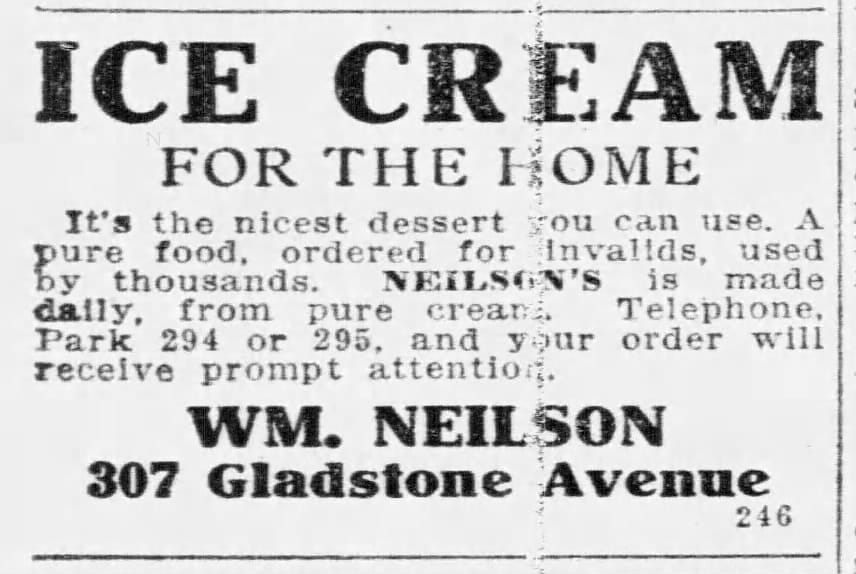
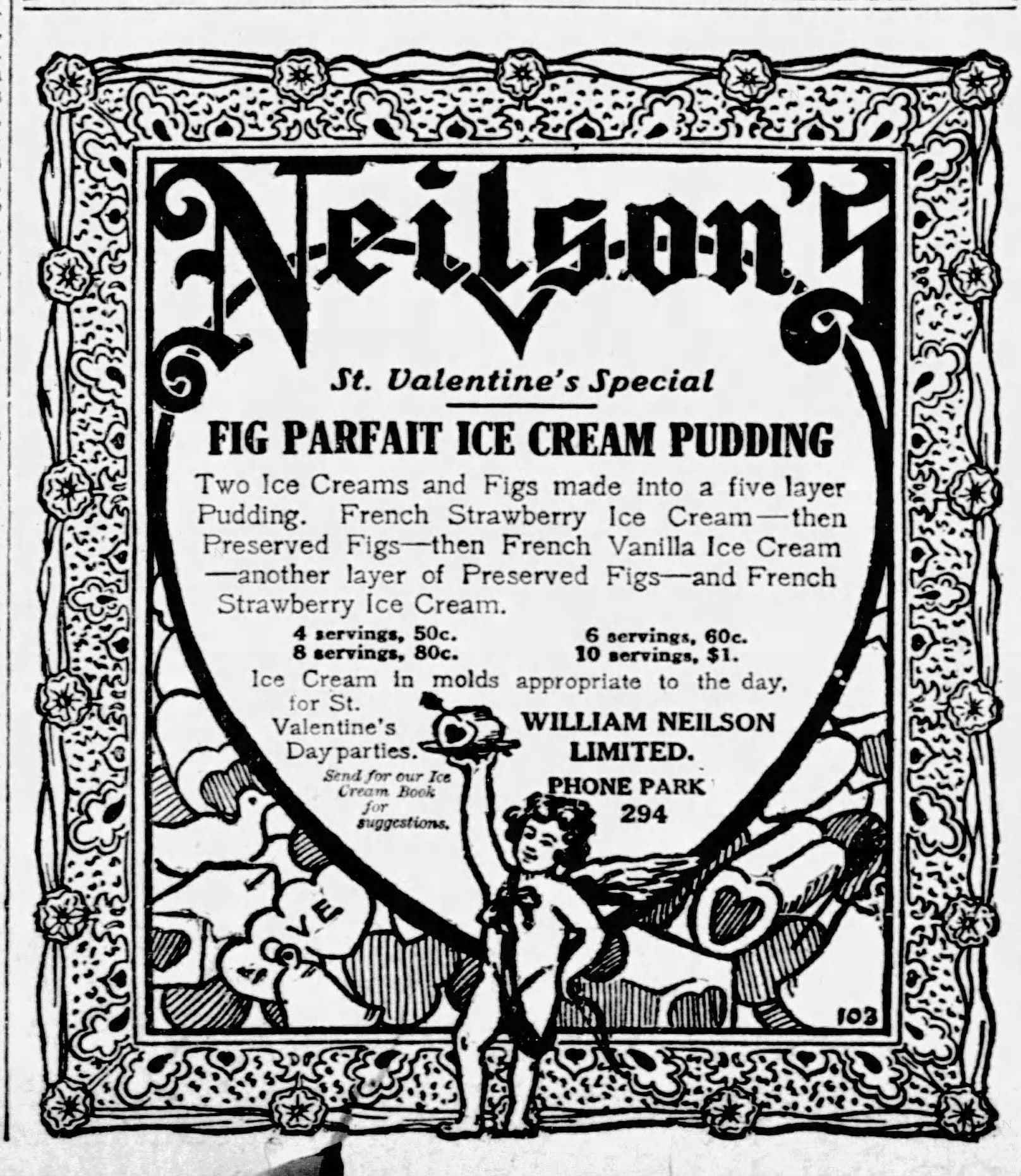
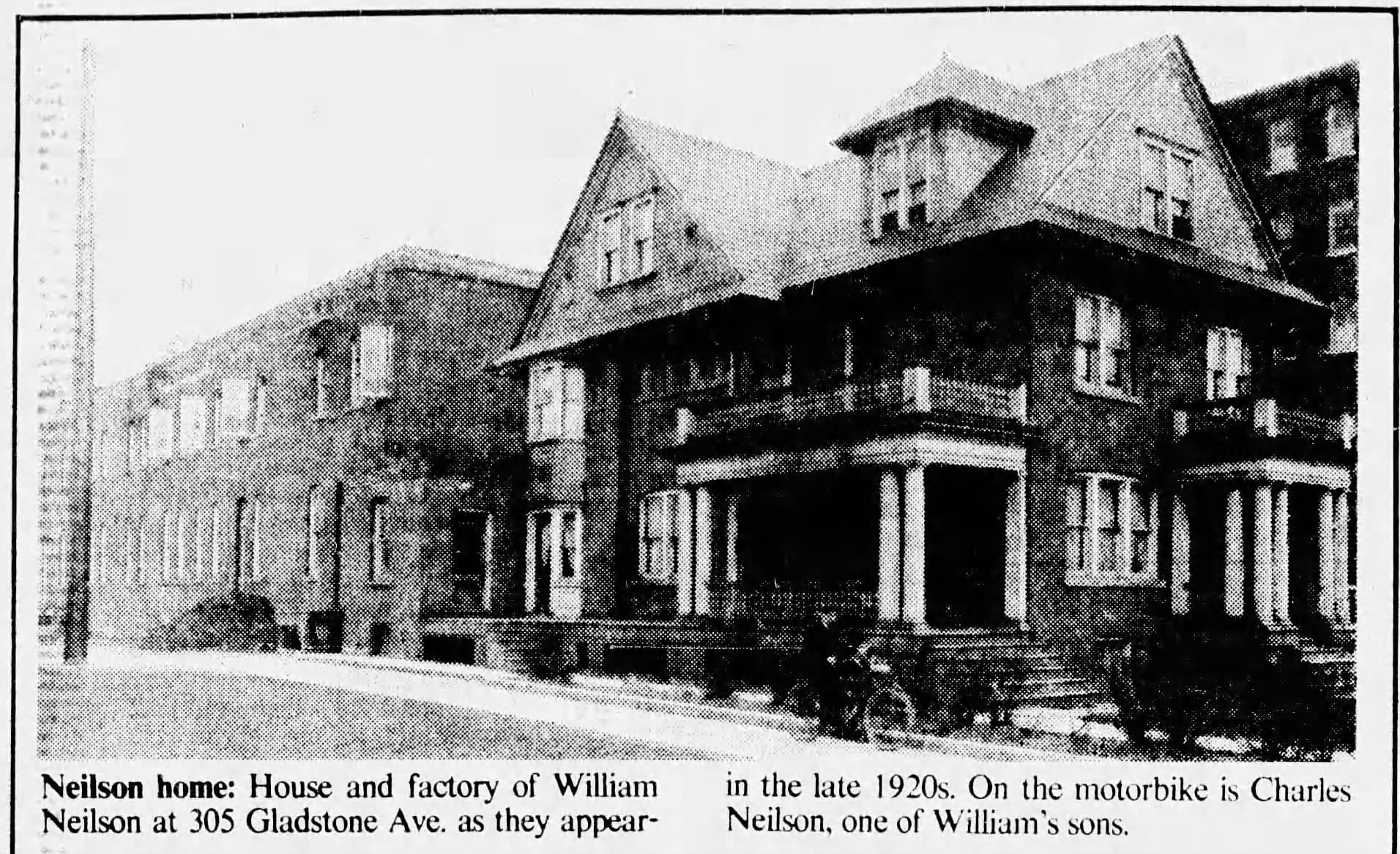
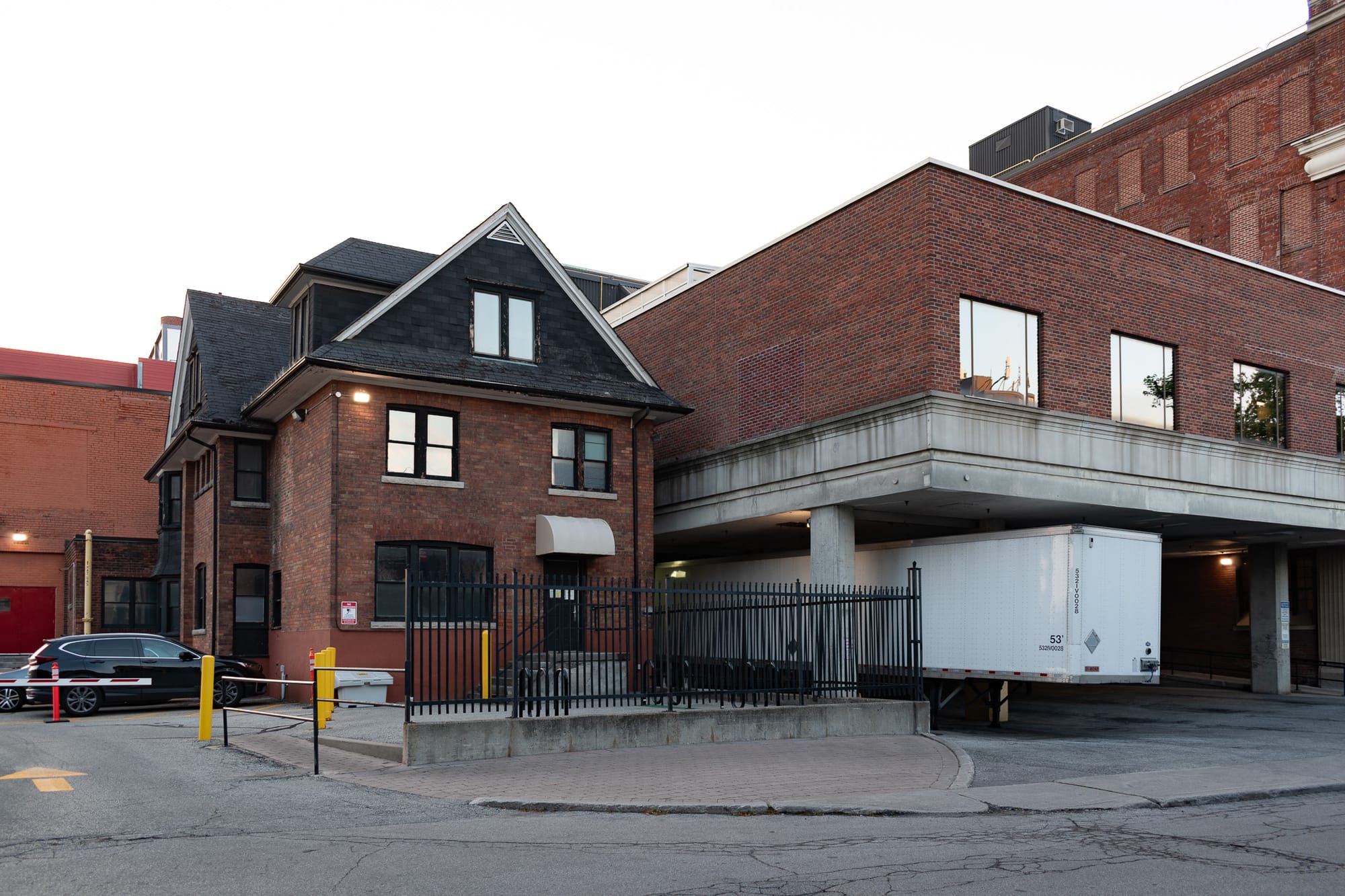
1904 permit | 1906 ad | 1912 ad | House of William Neilson and factory as it appears in the late 1920s | House of William Neilson and factory, 2023
The chocolate and ice cream business boomed, and within a decade Neilson expanded the complex twice–both times designed by Chadwick & Beckett. The second addition—the five-story brick building that features prominently in the postcard—ended in tragedy. With construction nearly complete in 1912, production began in the factory while the workers put the finishing touches on the building—so the building was buzzing in May, 1912 when the southern wall collapsed, killing two and injuring dozens of the (mostly male) construction workers and confectionery workers (mostly women).
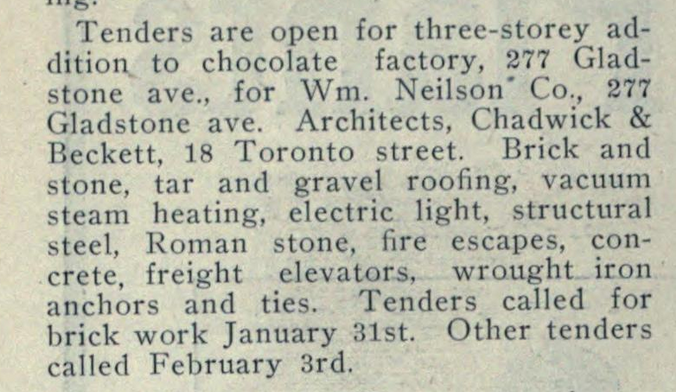
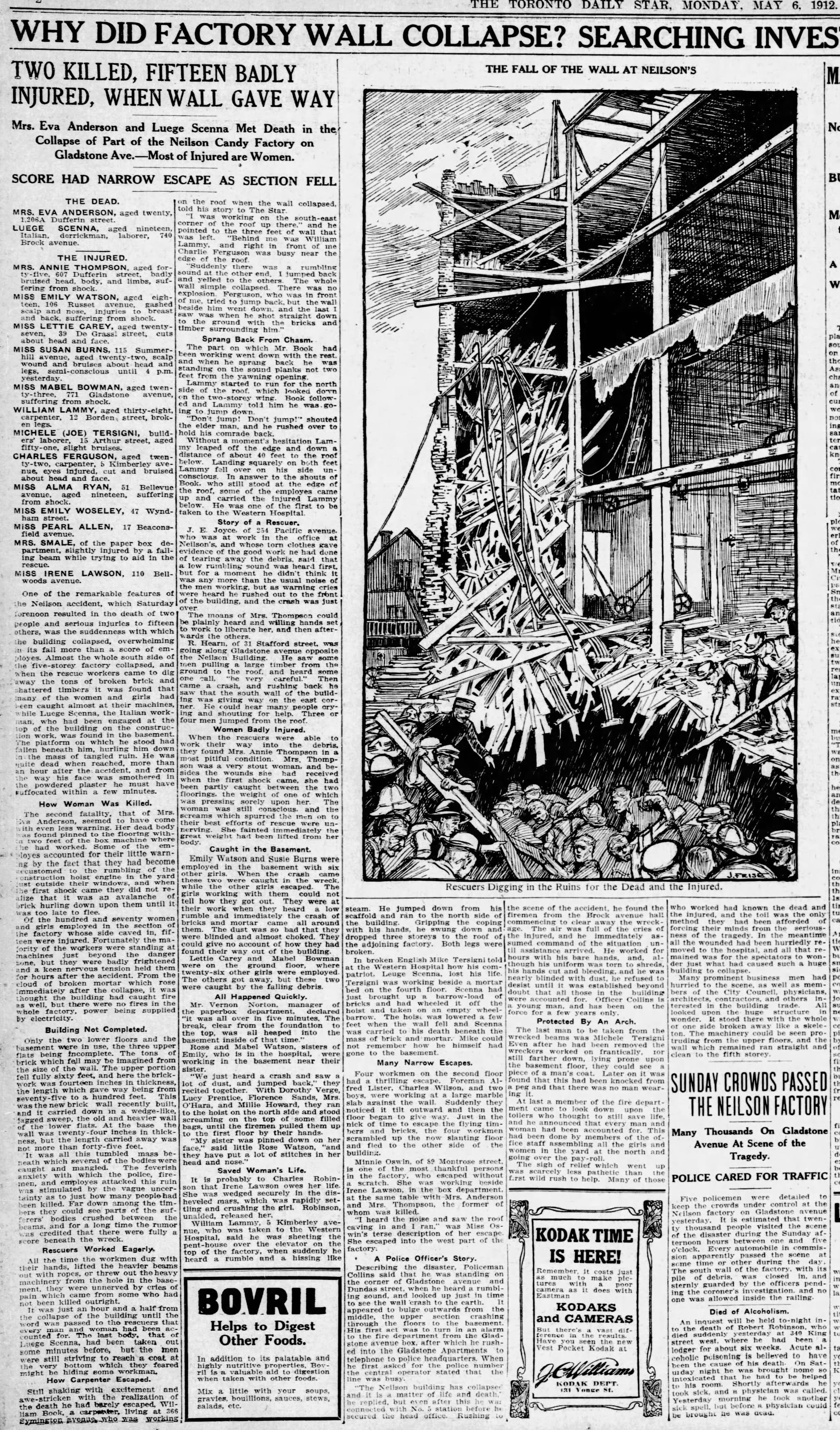
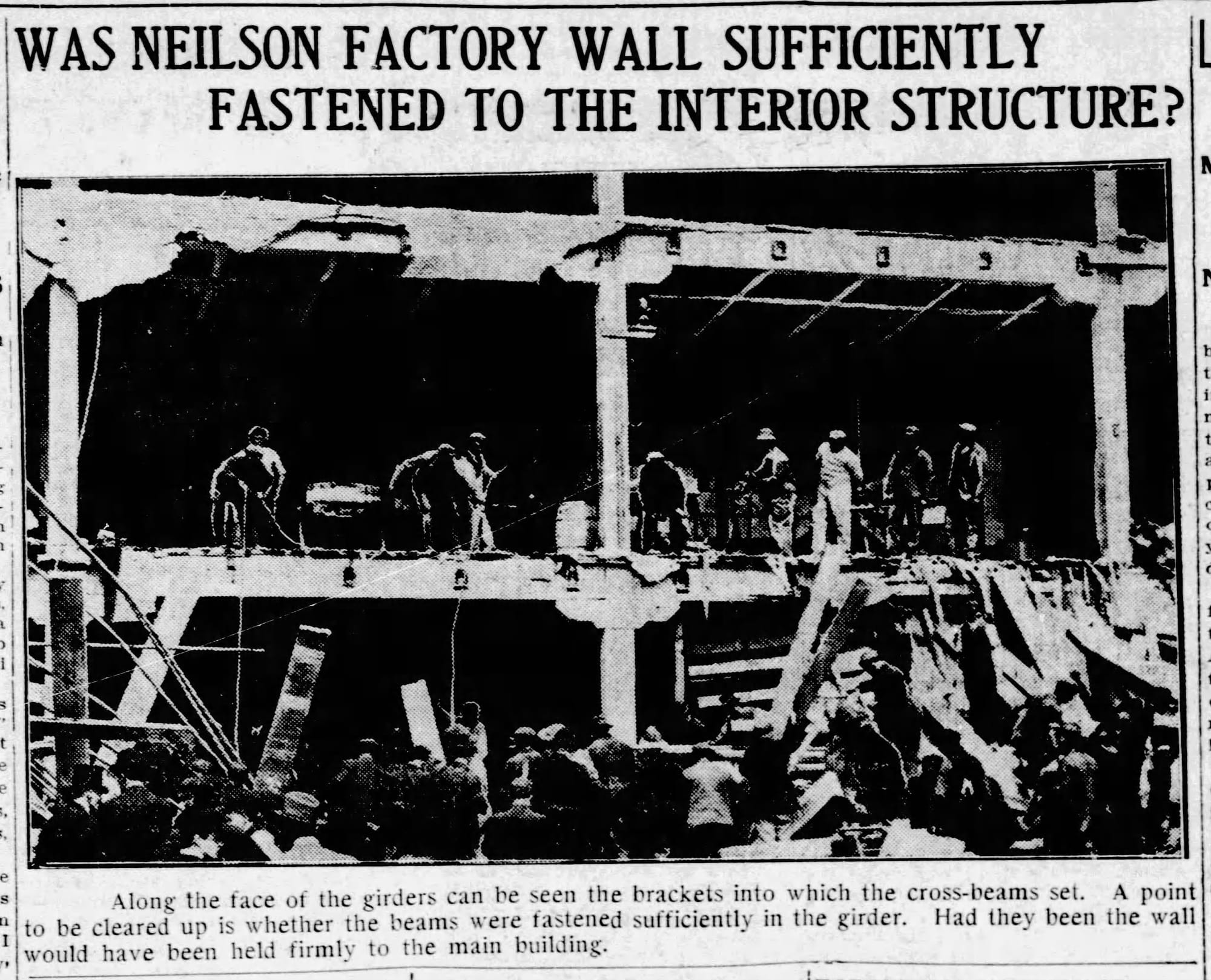
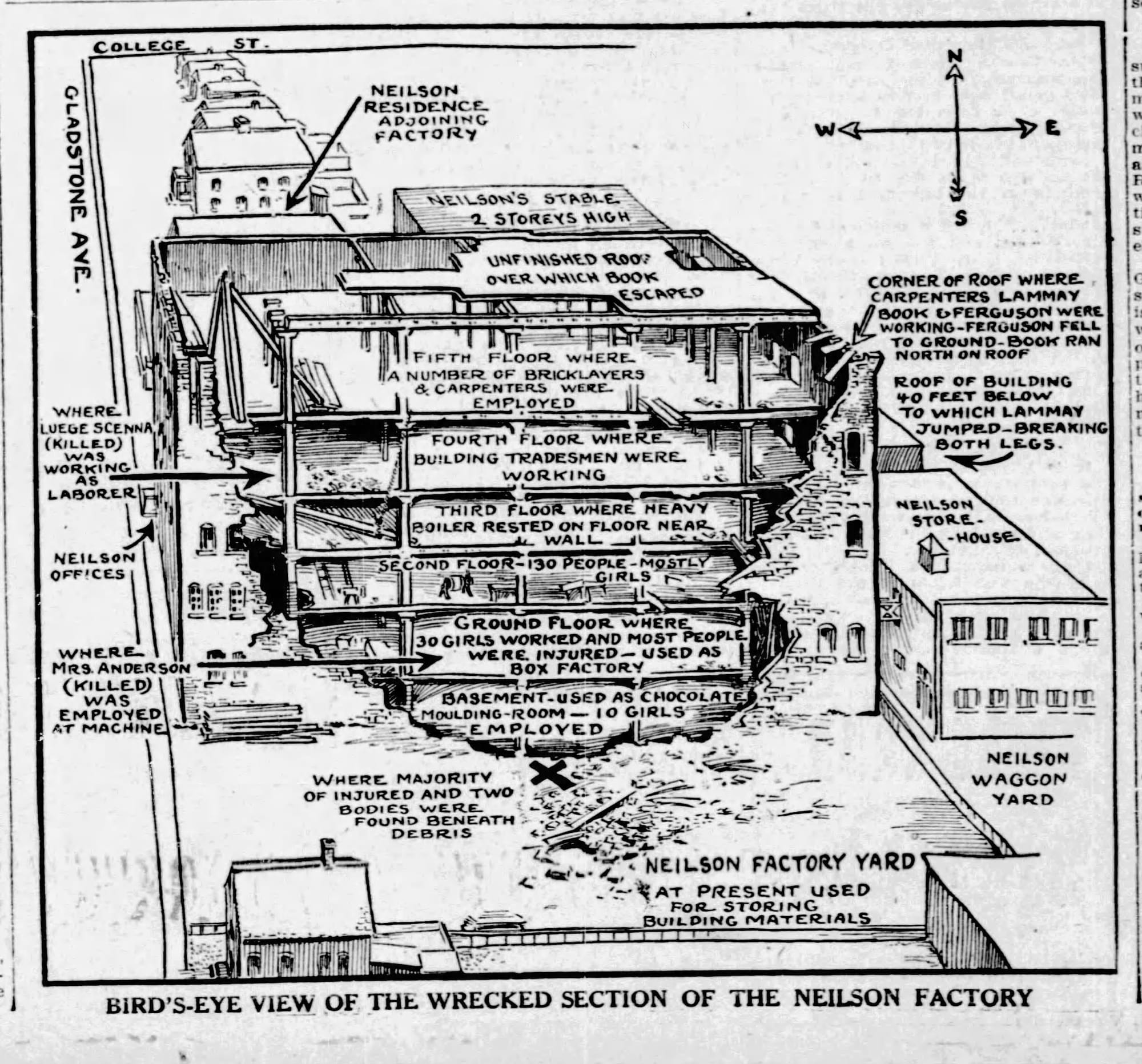
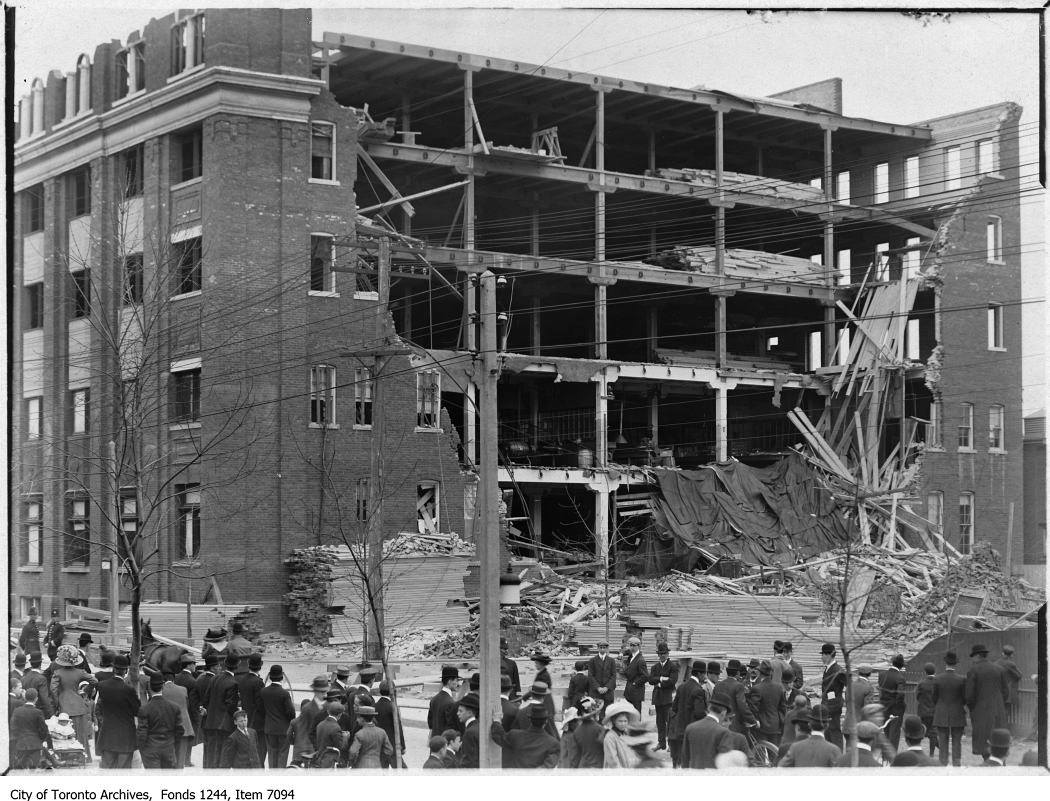
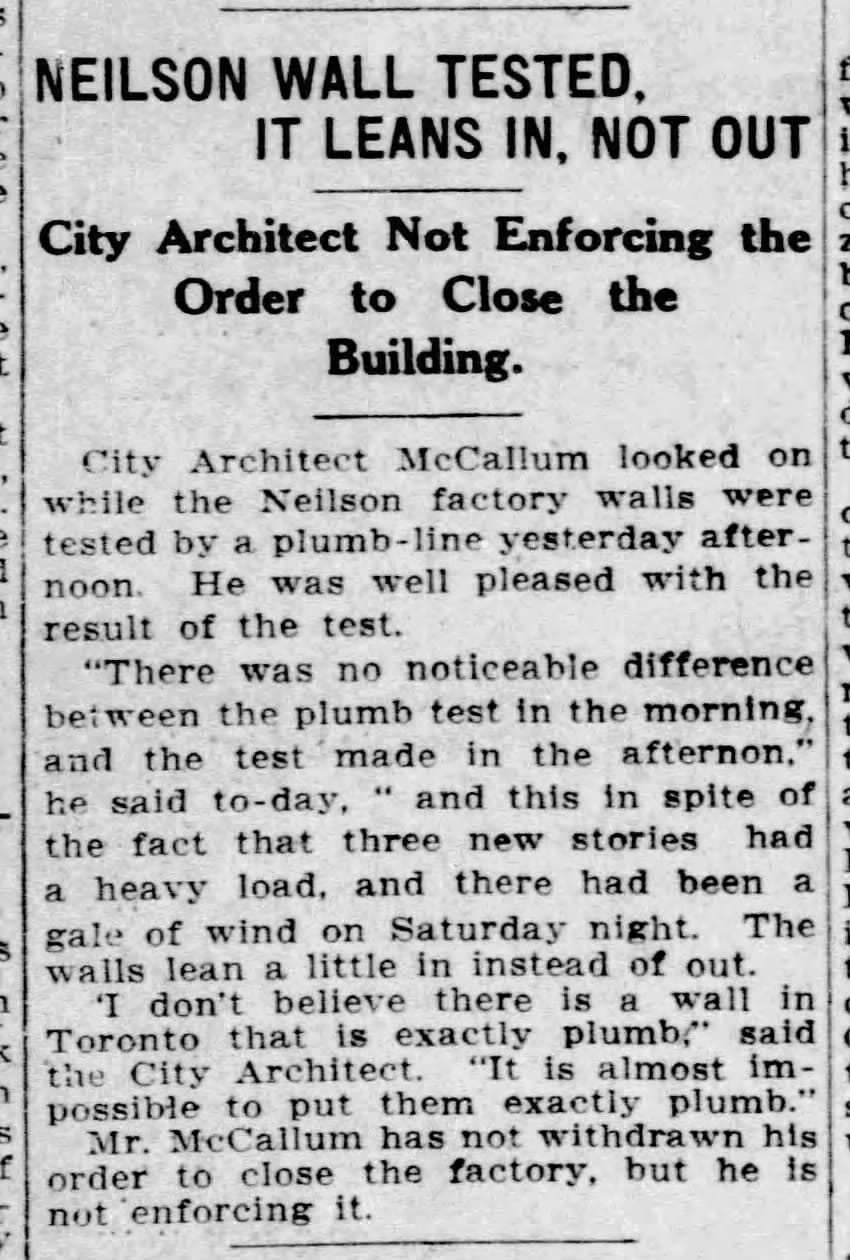
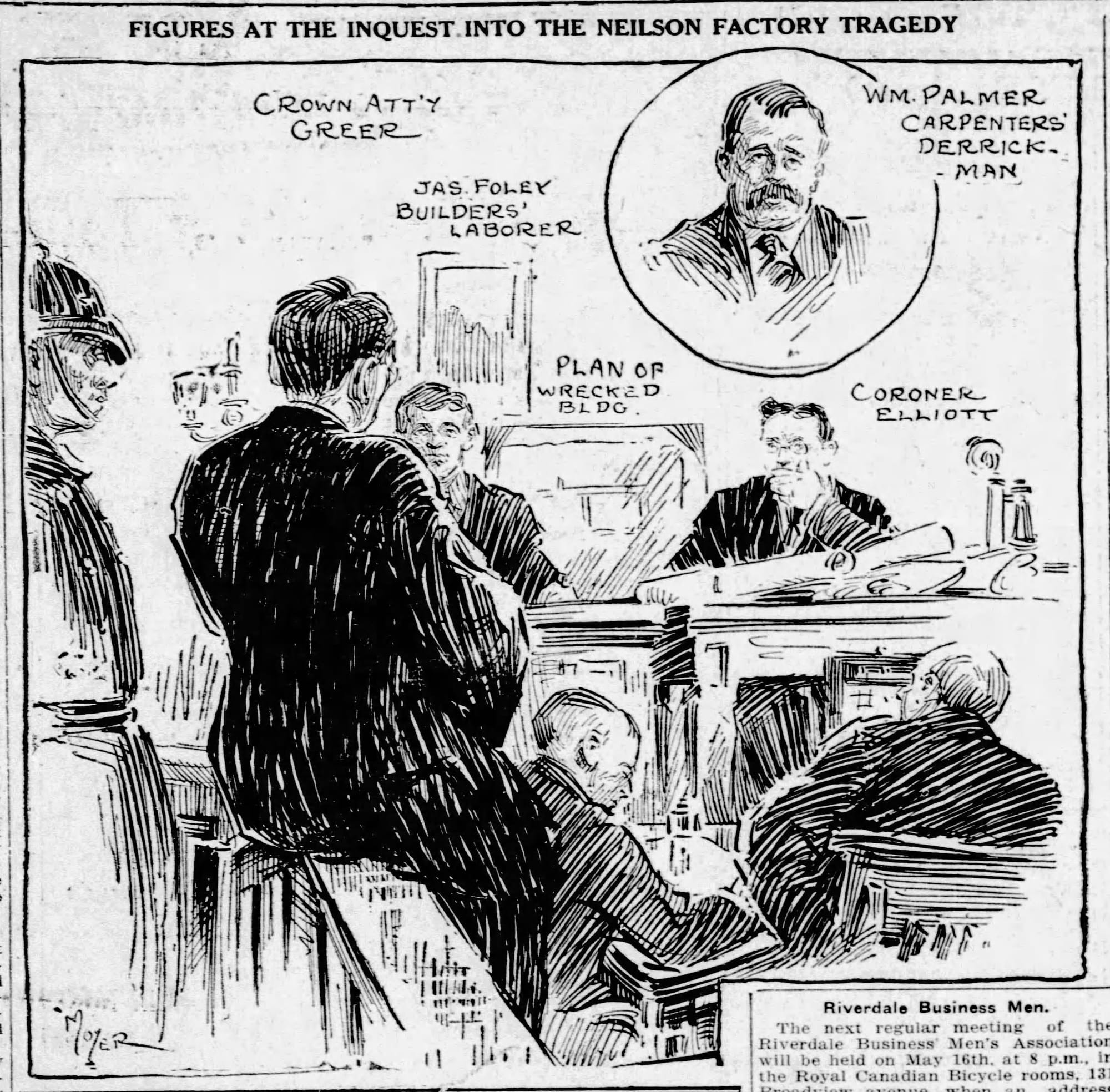
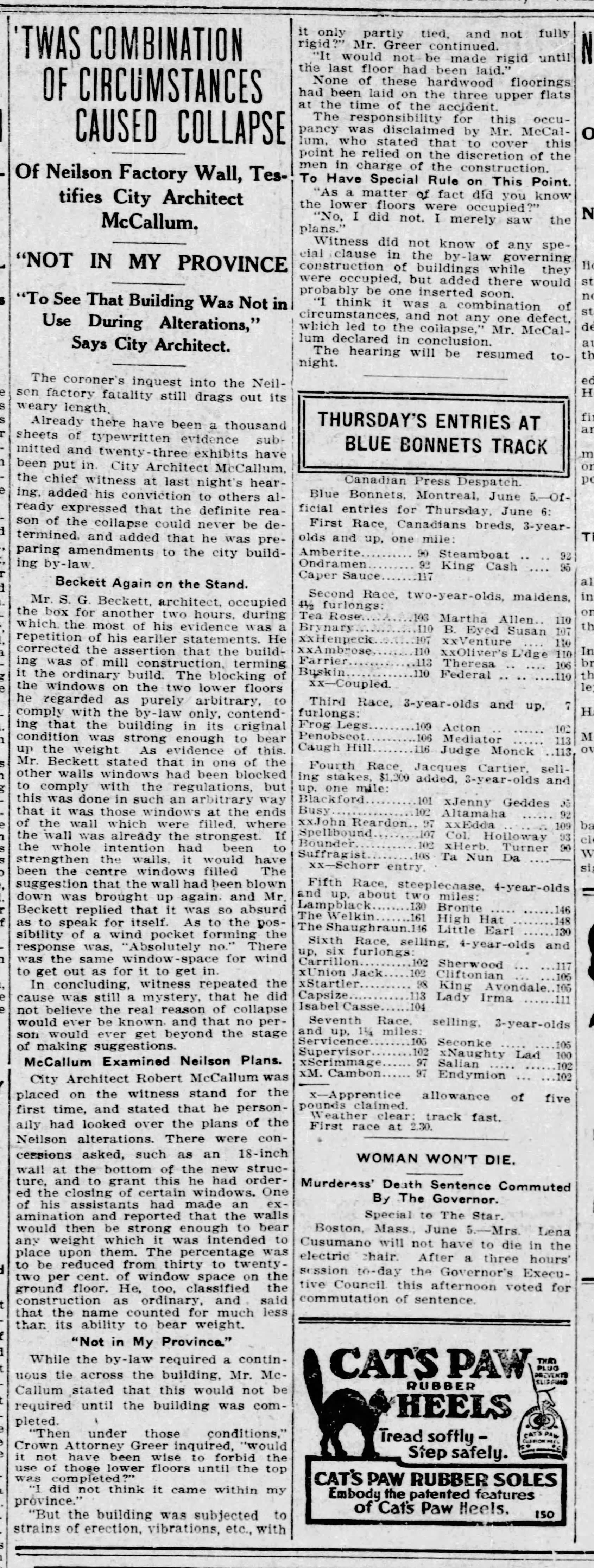

1912 permit | 1912 articles on the collapse and the investigation that followed | 1912 wall collapse photo, City of Toronto Archives
Everyone involved pointed fingers at each other, and the company defied the city by contining operations at the damaged plant, even as the city opened an inquest into the causes of the collapse. Ultimately found that no one party was culpable—a handful of independent factors combined to cause the wall to fail, including vibrations from the construction process and production machinery and loads that strained green masonry that hadn’t fully set. The inquest also found that Toronto—in the midst of a building boom—lacked the building inspectors to responsibly oversee all the new construction.
The deadly collapse seems like it was barely a speedbump for William Neilson—less than five years later the company doubled the size of the plant again, adding another five-story factory just to the south. This time, the company comissioned architects Sproatt & Rolph—architect Samuel Gustavus Beckett had gone to war, where he’d die at Vimy Ridge in France.
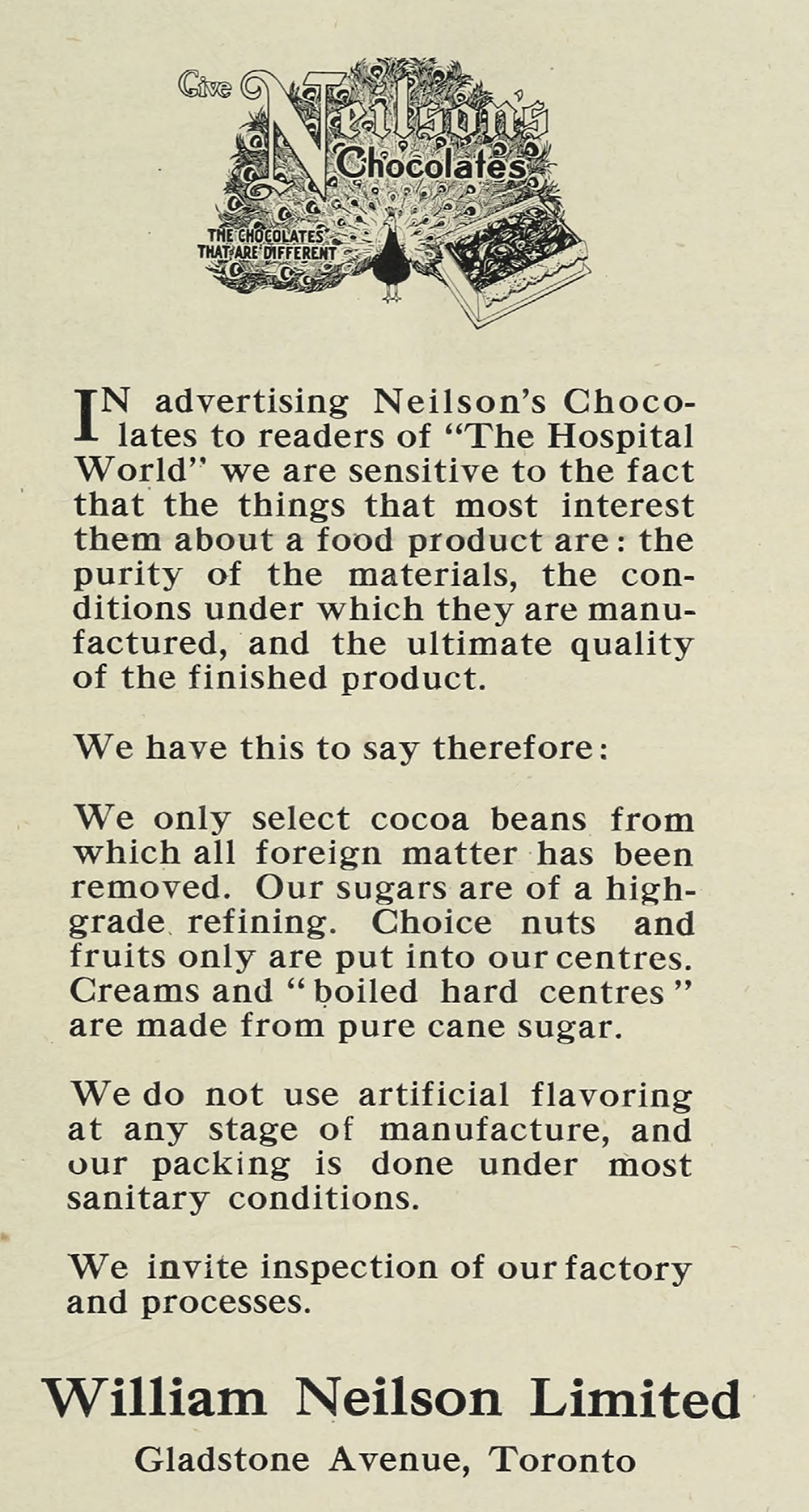
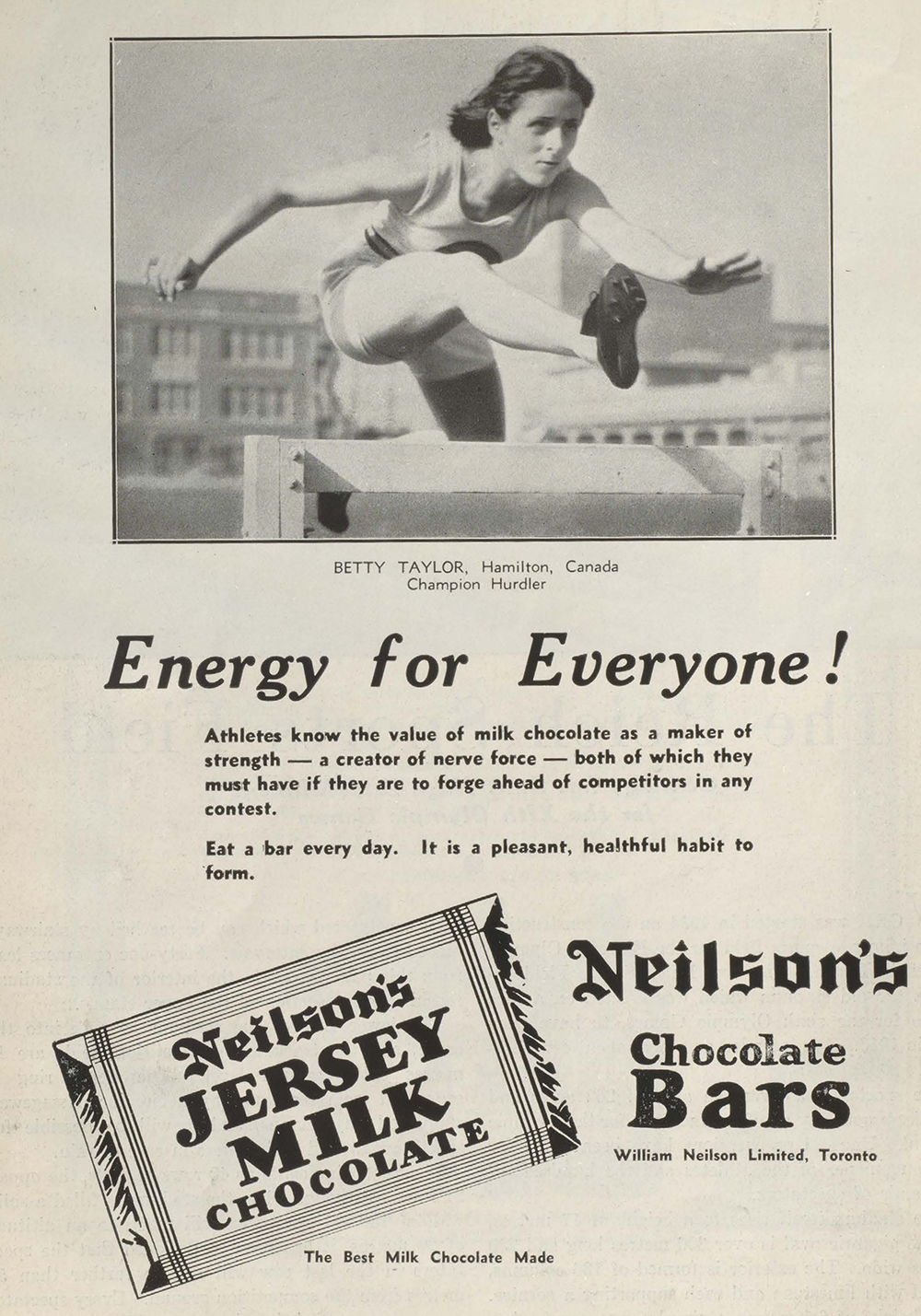
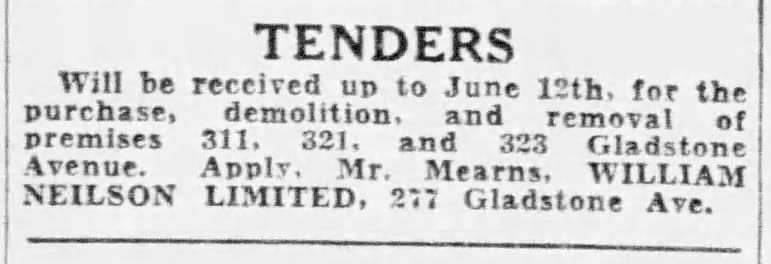
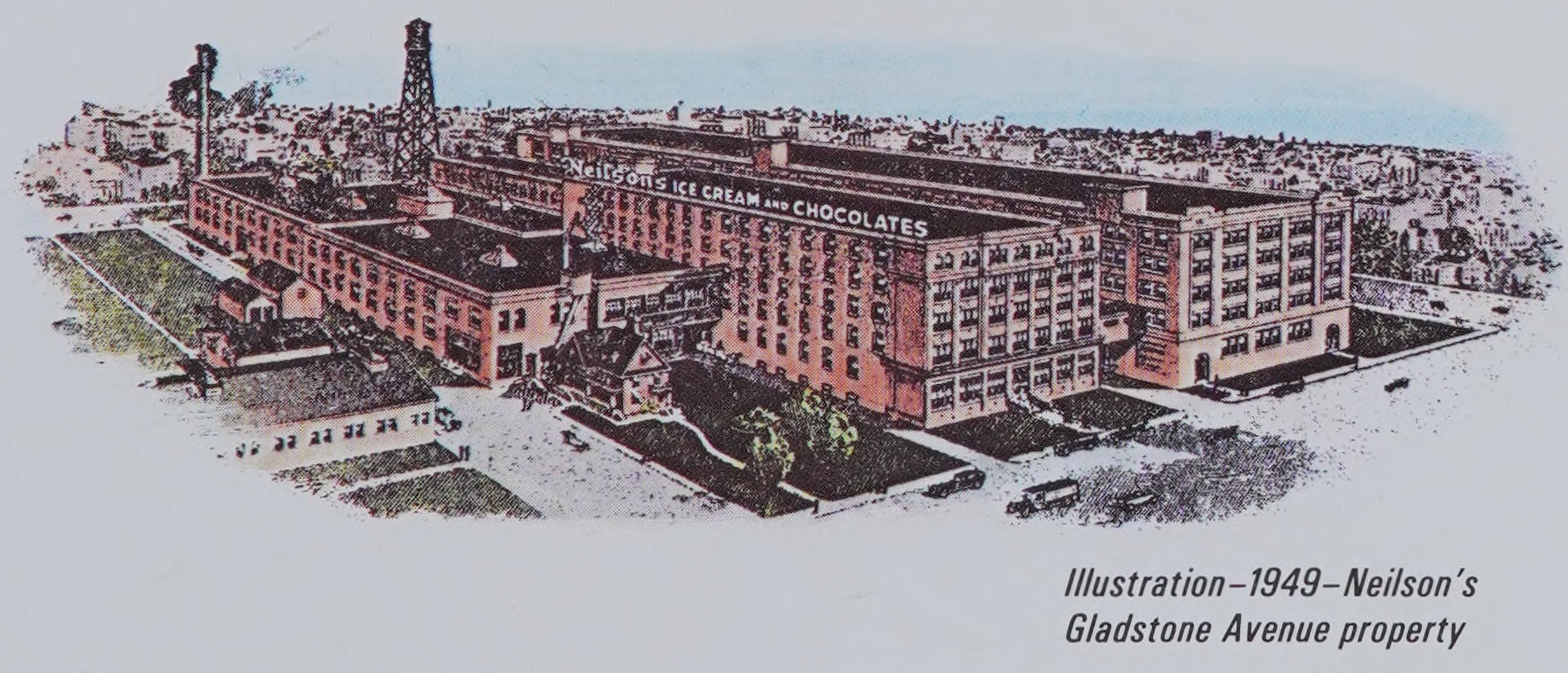
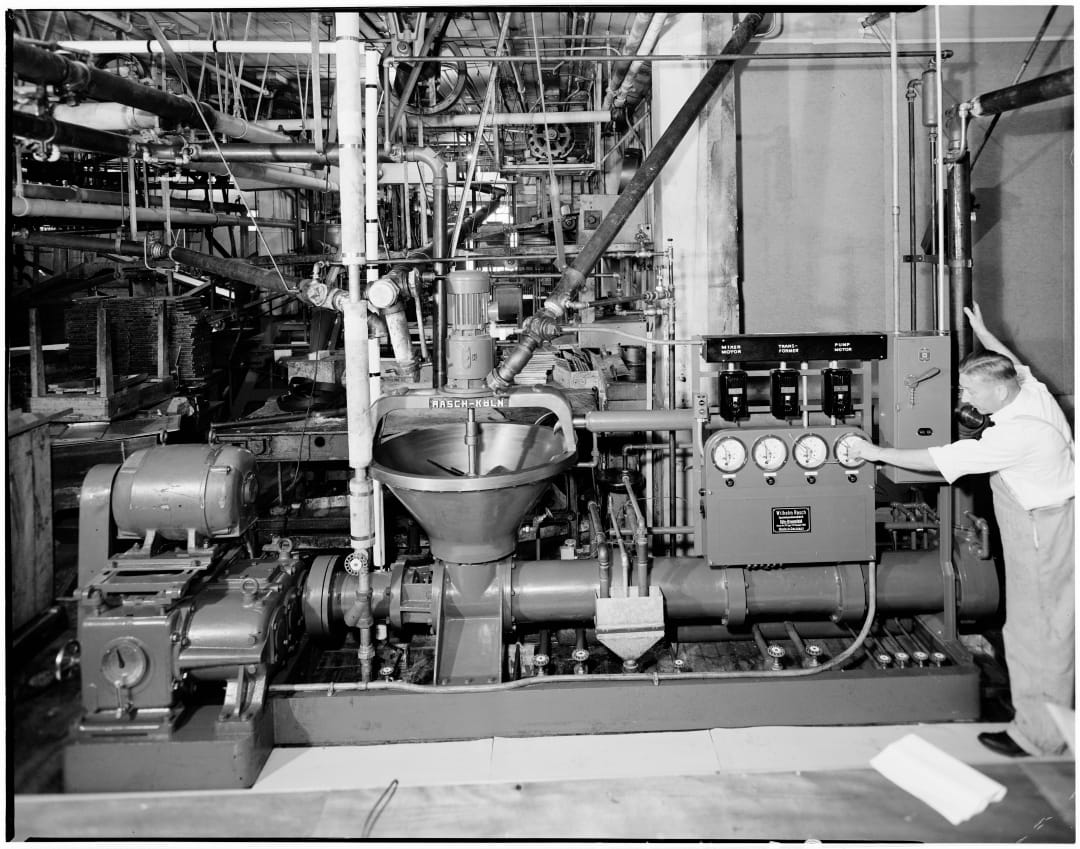
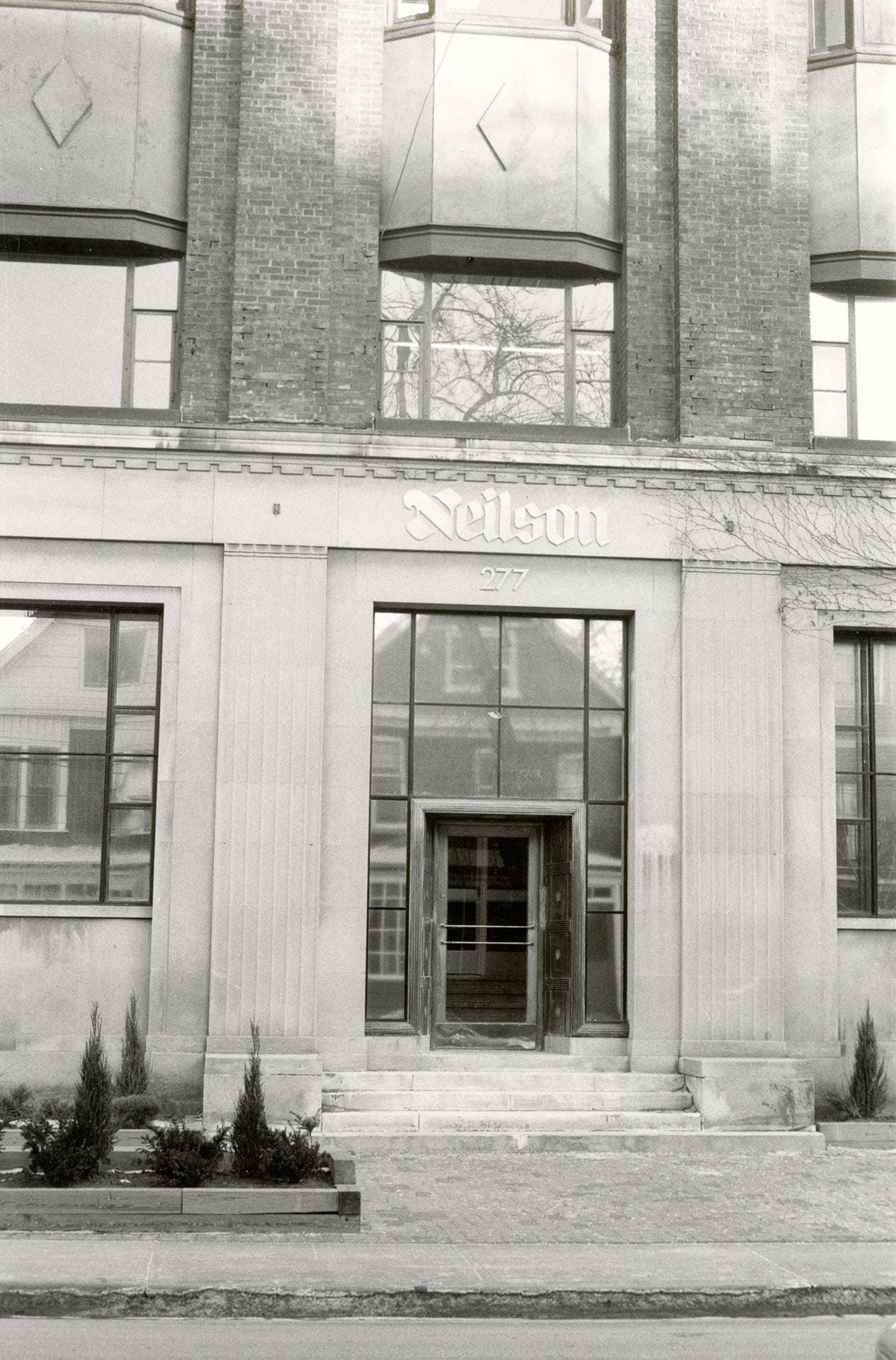
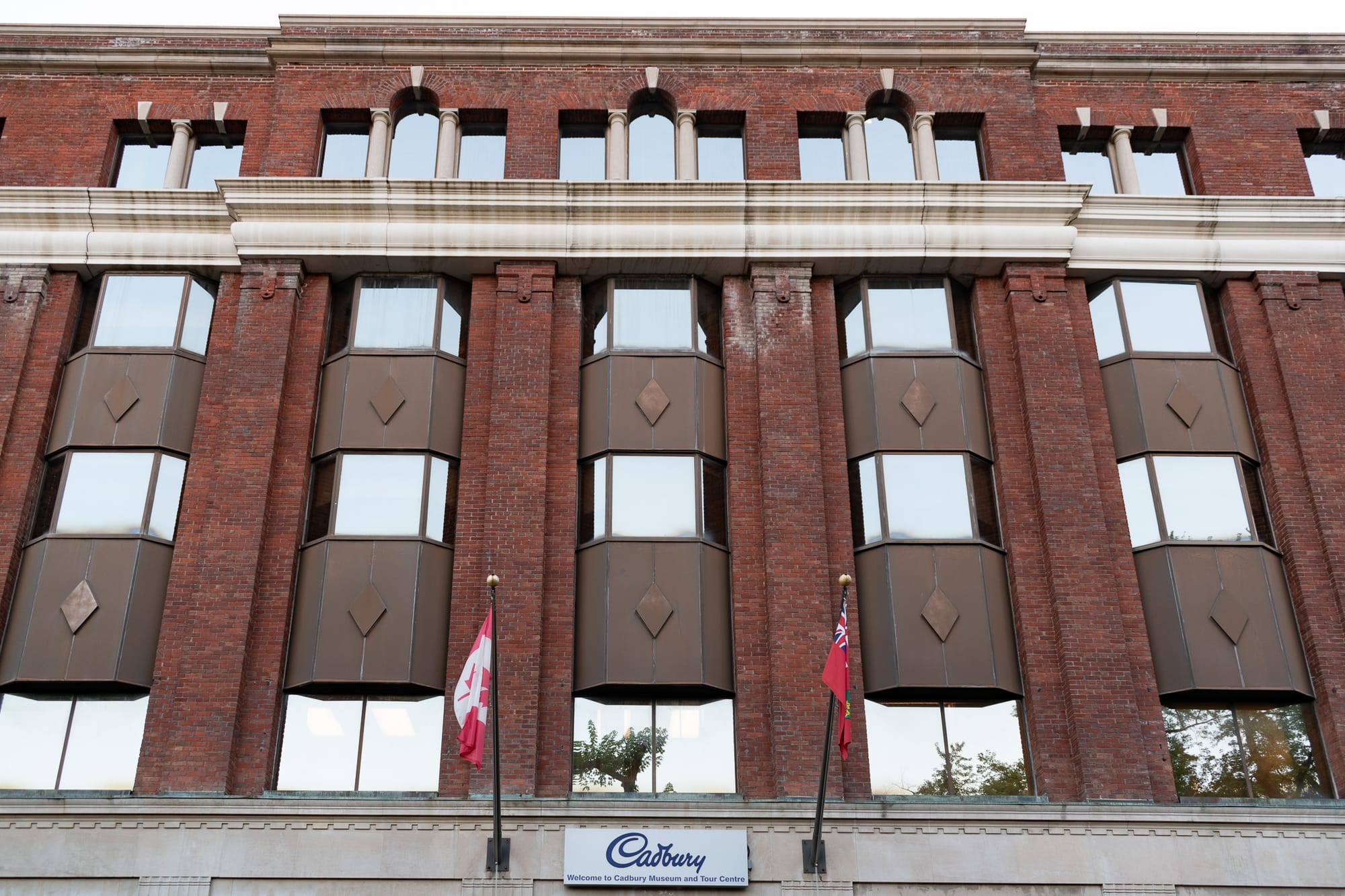
1918 ad in Hospital World, the Internet Archive | 1936 Olympics ad, the Internet Archive | 1937 ad for home demolition | 1949 illustration, George Weston Ltd. Annual Report, 1981, the Internet Archive | 1953, Mixing Machines, Gilbert A. Milne, City of Toronto Archives | 1980, Local History Collection, Bloor/Gladstone branch | 2023
The Neilson family grew the company through the 1930s and 1940s–swallowing up more of plant's neighboring homes for parking or future expansion–before they sold to George Weston in 1946 for $4.5m (roughly $65m in 2025 Canadian dollars). An industrial chocolate factory surrounded by single-family homes, zoning had been a concern for the company even in the 1910s. By the 1970s the company was seriously weighing a move to the suburbs—expansion and shipping would be easier, and land would be cheaper. Over the decades, though, the plant had become a neighborhood fixture beyond only a source of employment—it hosted trick-or-treaters on Halloween, school tours, and diffused a distinct chocolate scent across Little Portugal.
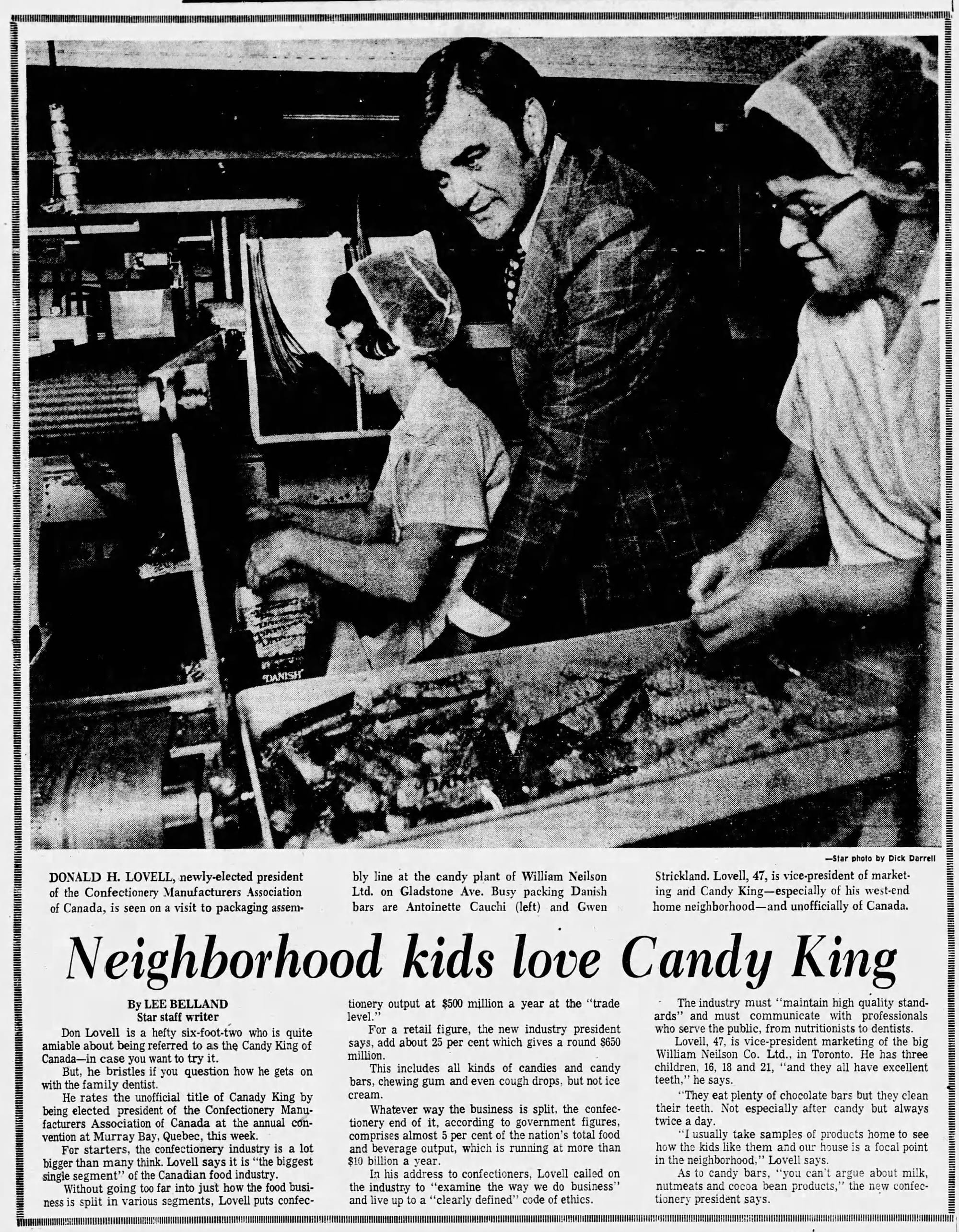
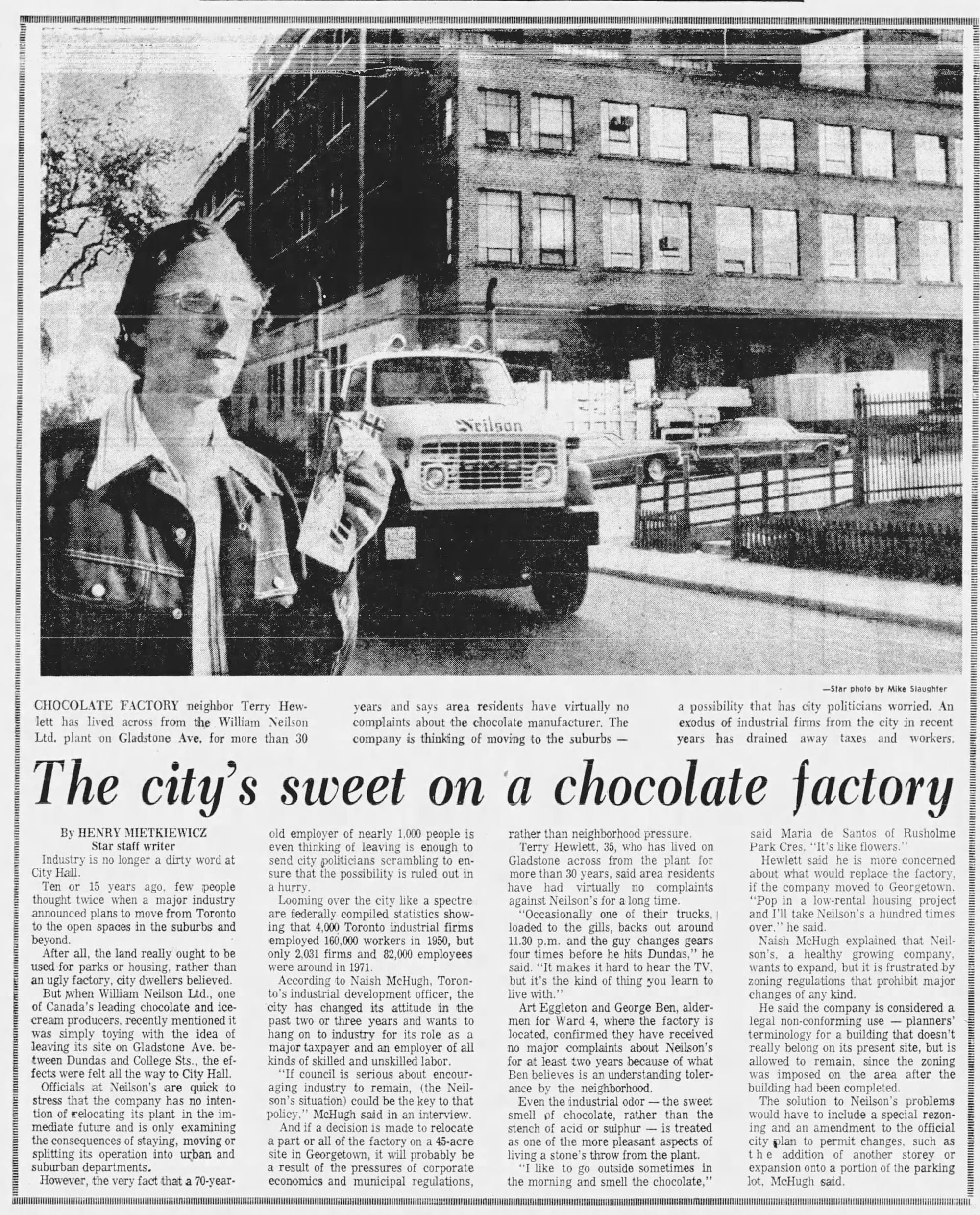
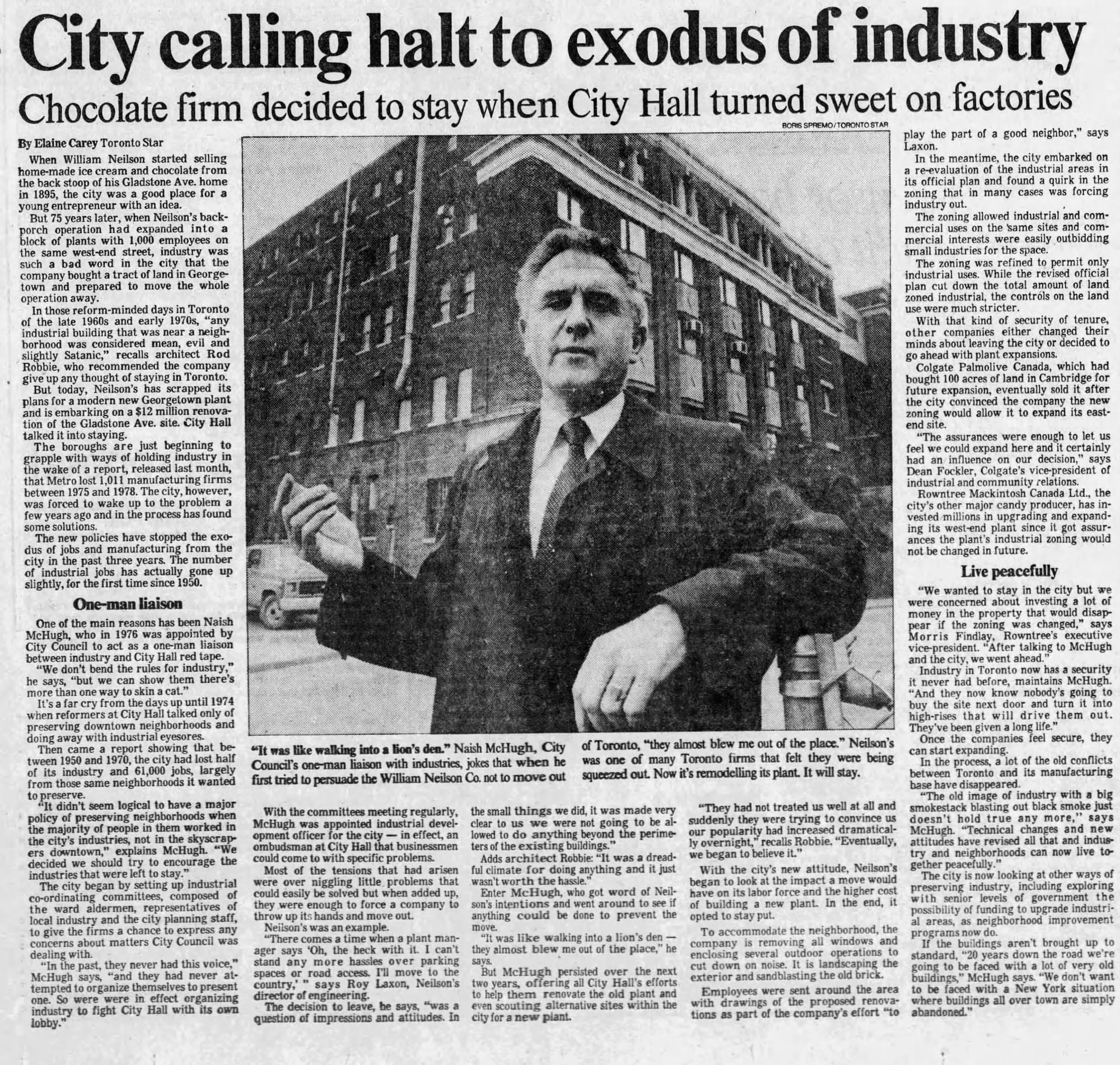
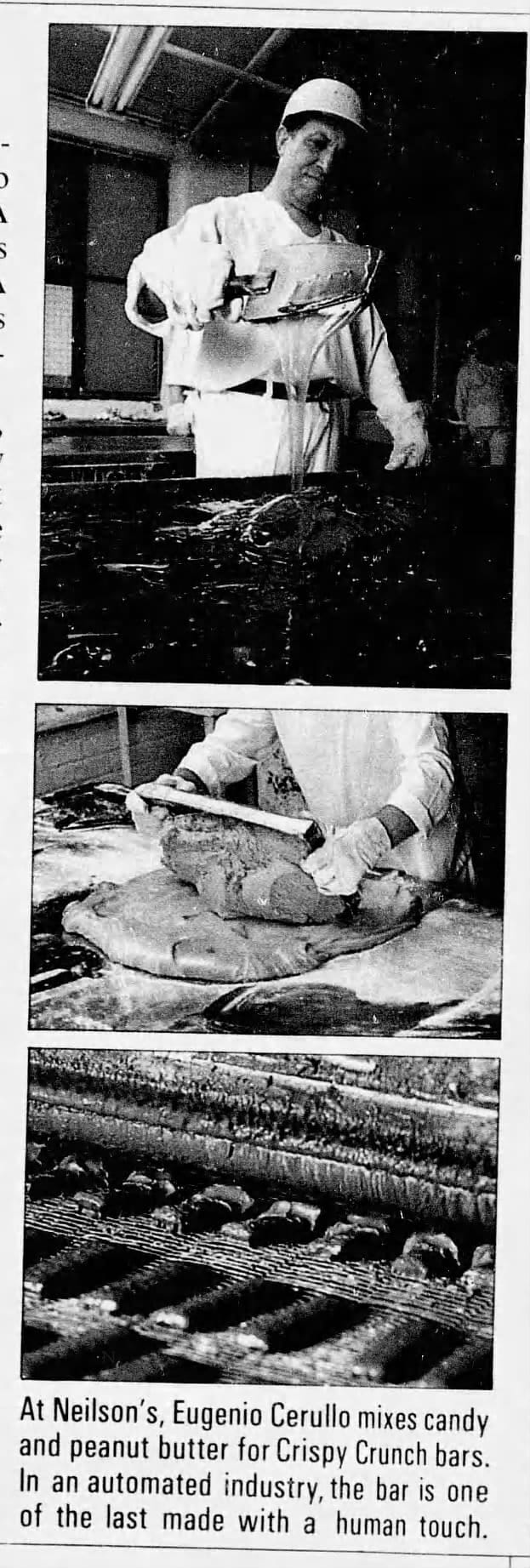
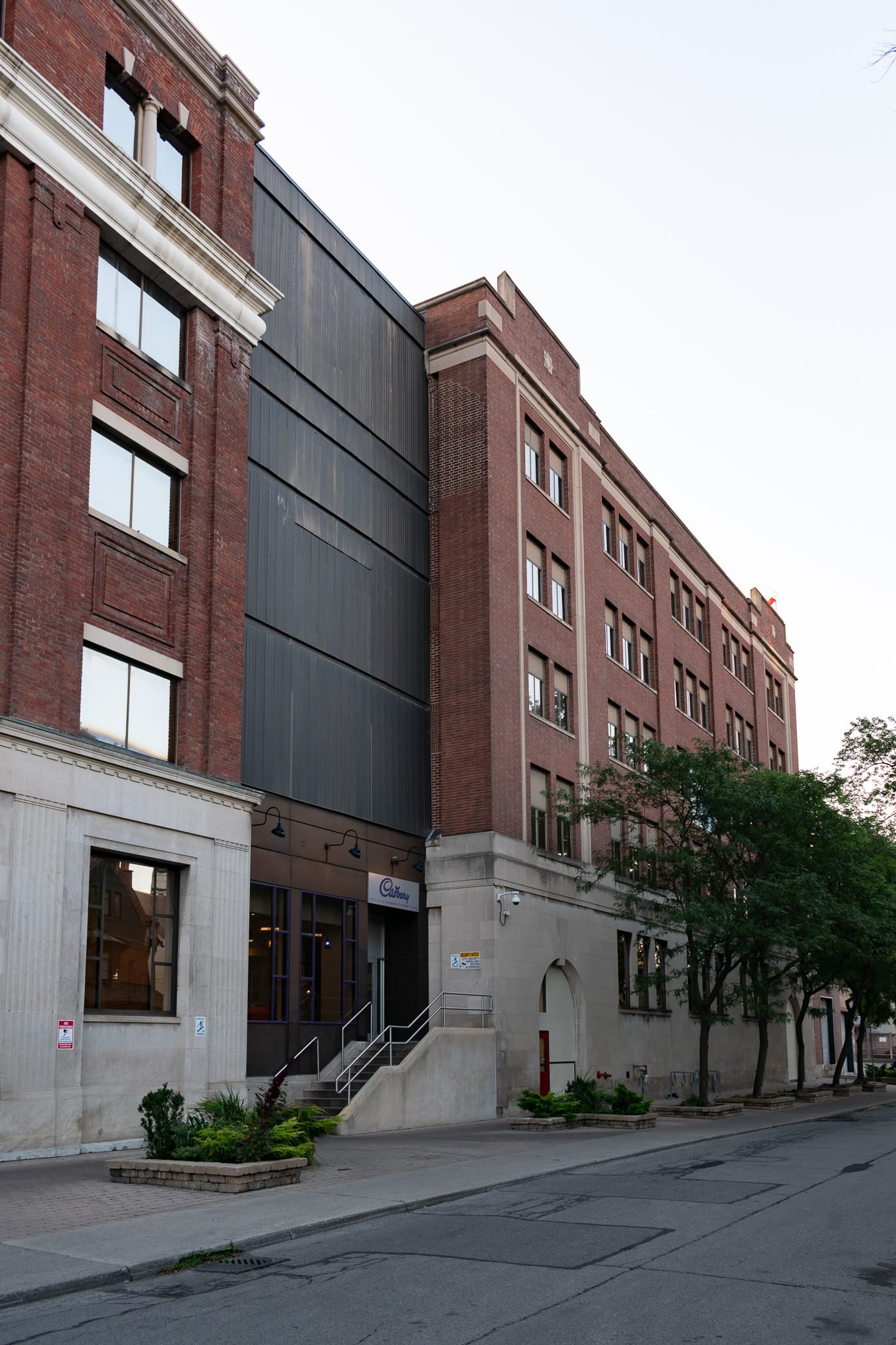
1975 article | 1976 article | 1979 article | 1979 newspaper photo | 2023 photo
A lobbying offensive from the city of Toronto, some tweaking of industrial zoning policy, and considerations over access to a skilled confectionery workforce convinced the company to stay on Gladstone. They undertook a $12m renovation of the plant in 1979—to put that number into context, the William Neilson division of George Weston had a revenue of $212m in 1981.
George Weston sold their confectionery business—William Neilson—to Cadbury in 1996, and this plant became the source of all Cadbury products made in Canada. Cadbury also assumed production of William Neilson chocolate bars like Jersey Milk and Crispy Crunch.
Cadbury then sold to Chicago-based Kraft Foods in 2011, before it split into Mondelez in 2012. An industrial chocolate factory surrounding the founder's family home, itself surrounded by a residential neighborhood—this is a quirky survivor, but one that looks like it still has a few more years in it, after Mondelez invested another $37m to further modernize the plant in 2019.
1903 - 1987 in fire insurance maps and aerial photos
Production Files
Further reading:
- Candymaking in Canada: the history and business of Canada's confectionery industry by David Carr
- Made in Toronto – Chocolate
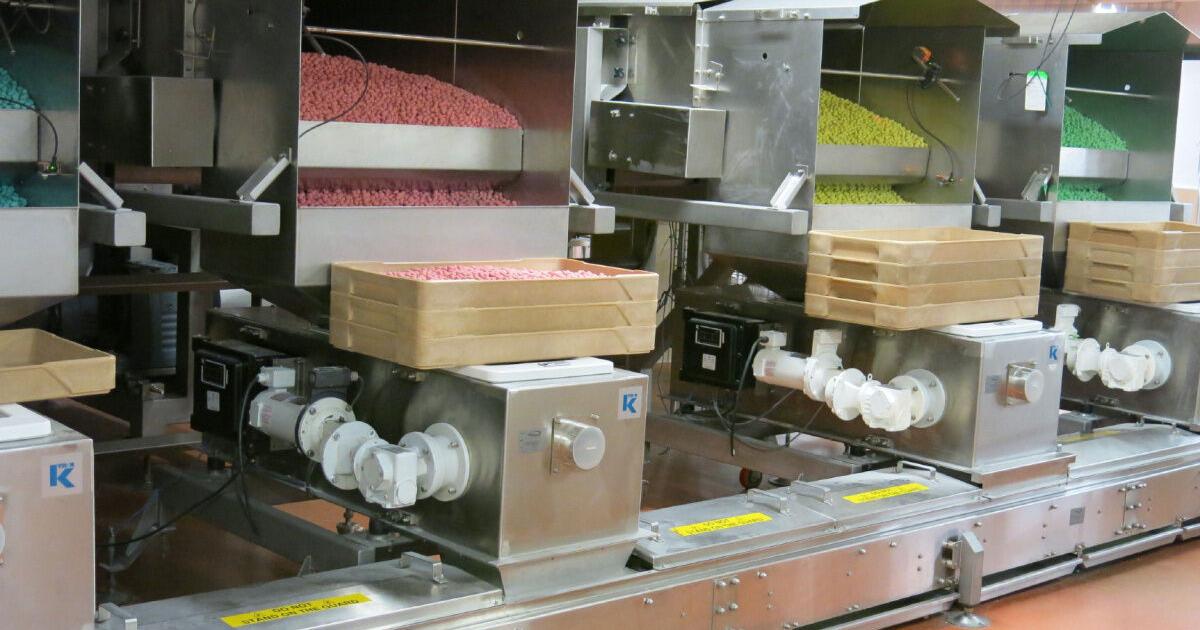

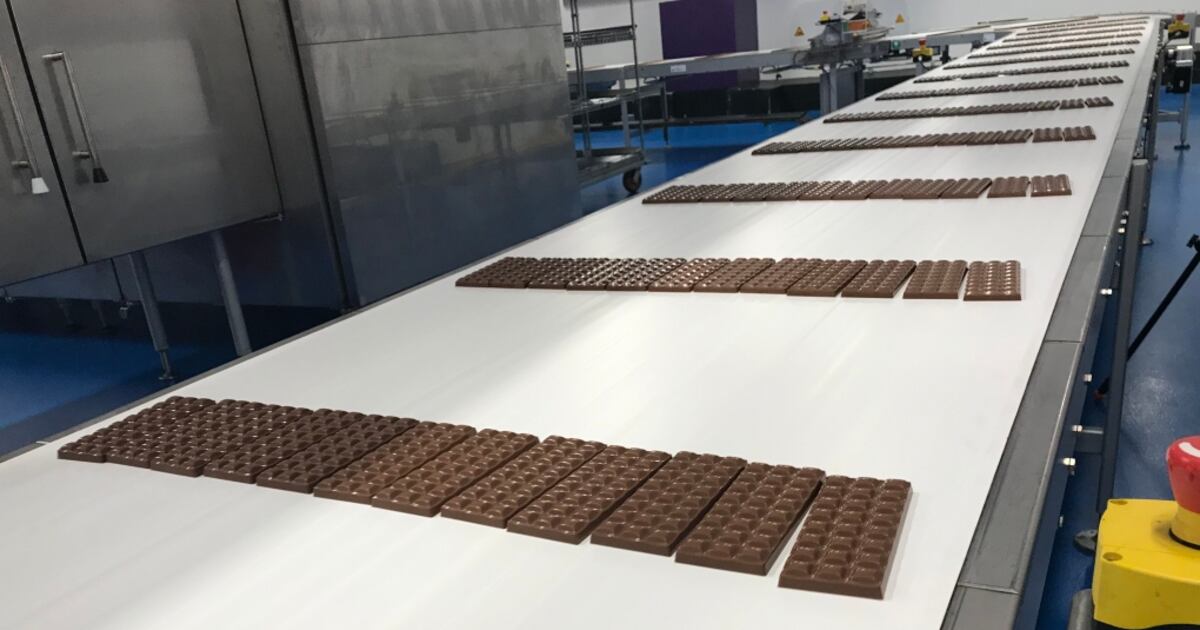
In addition to William Neilson's house and factory, Chadwick & Beckett designed his son Morden's house, as well as a bunch of other residential and light industrial stuff around Toronto before Beckett died in World War 1.
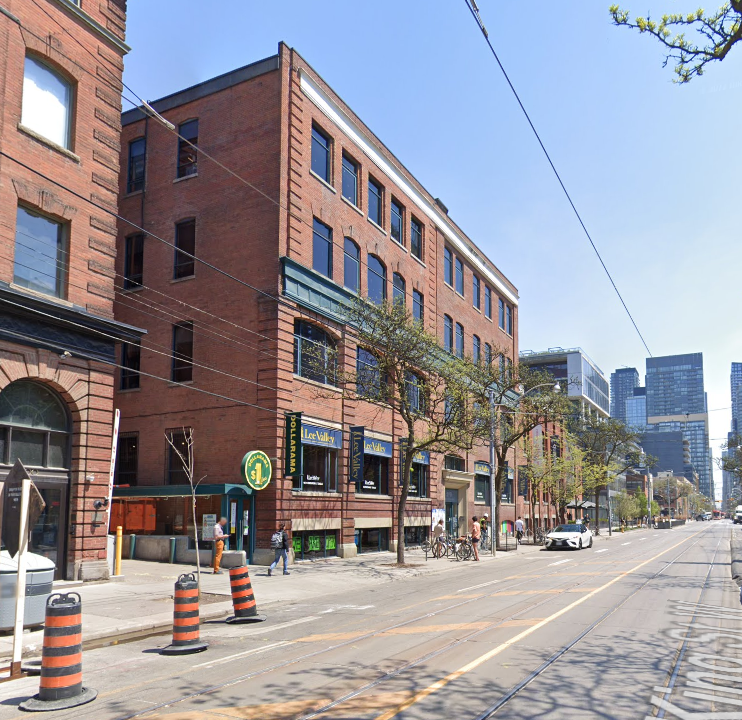
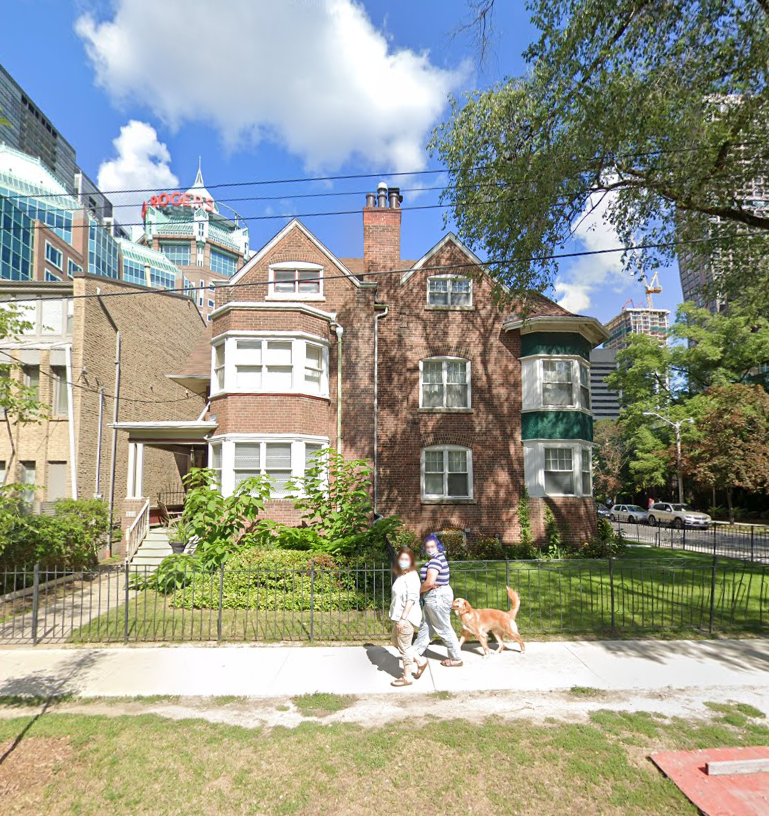
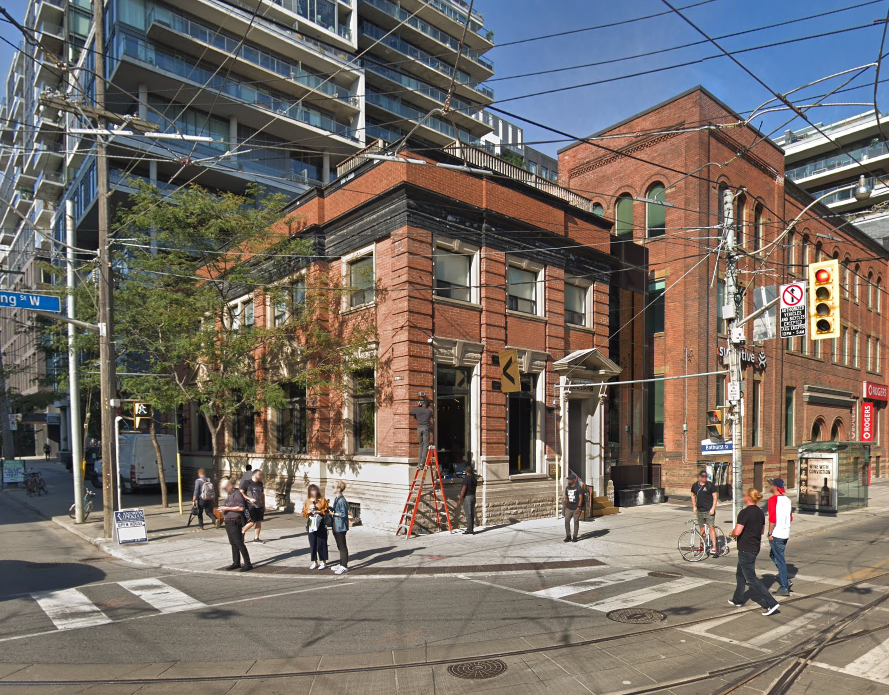

Kodiak Building, 2021, Google Streetview | Samuel R. Wickett House, 2021, Google Streetview | TD Bank, 2018 (demolished), Google Streetview | Beckett's 1917 obituary
Some more William Neilson ads.
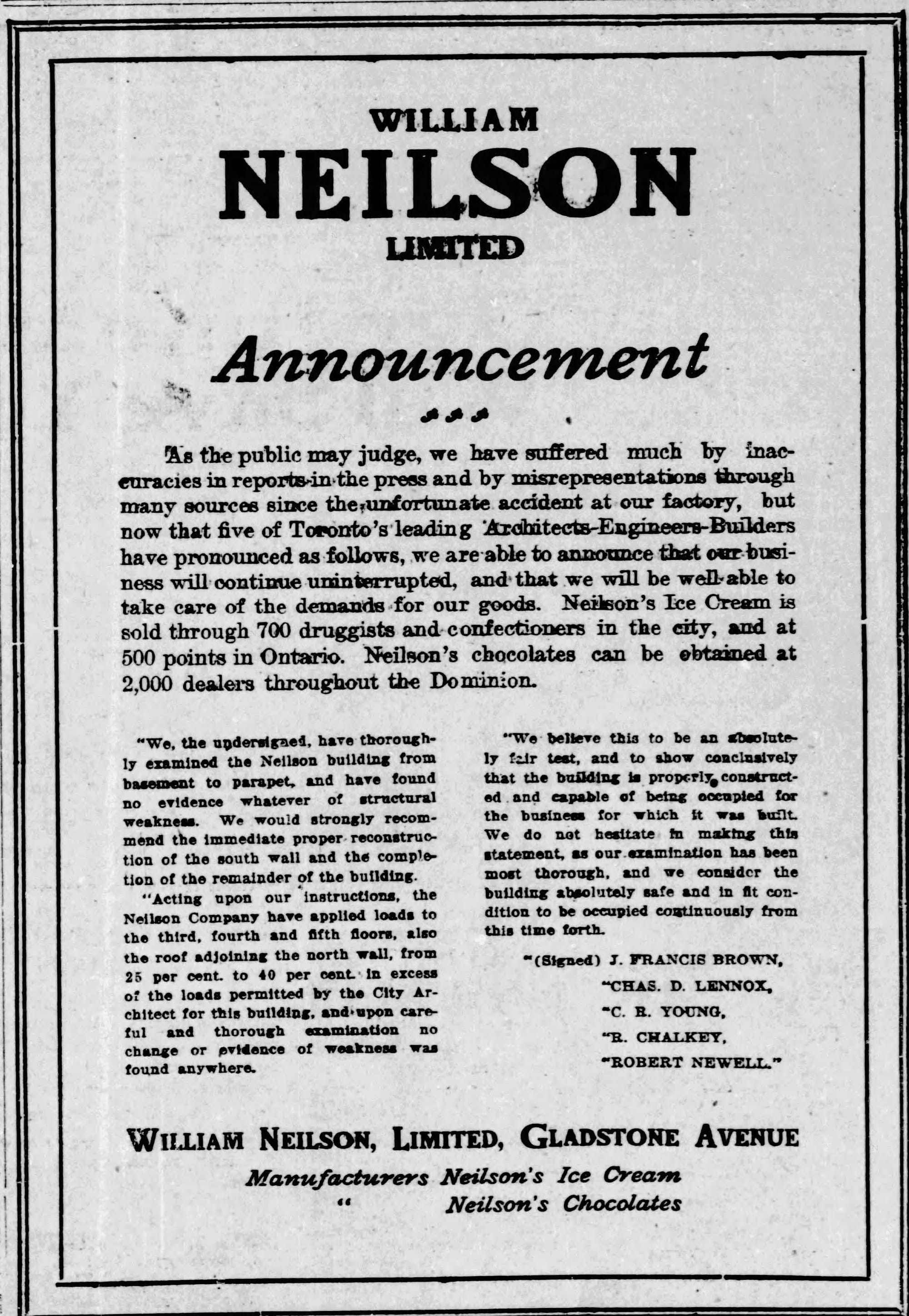
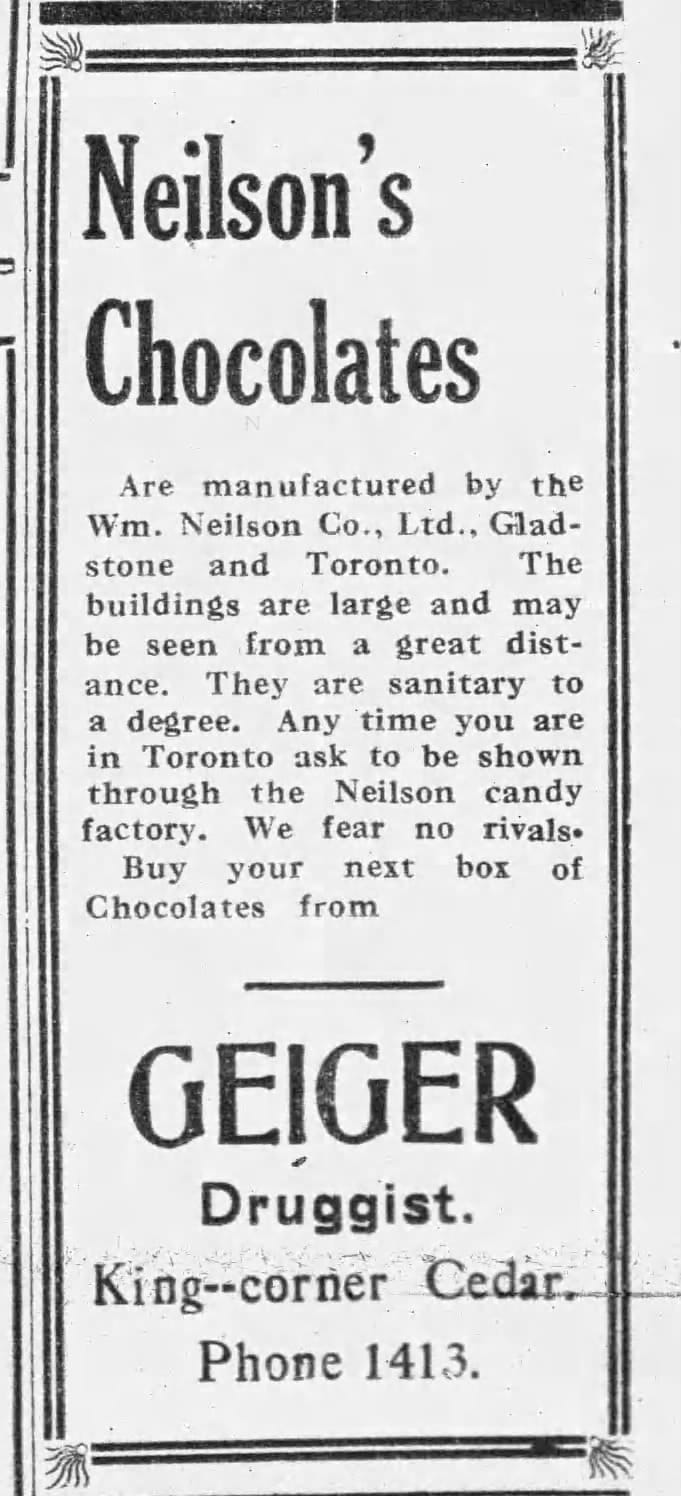
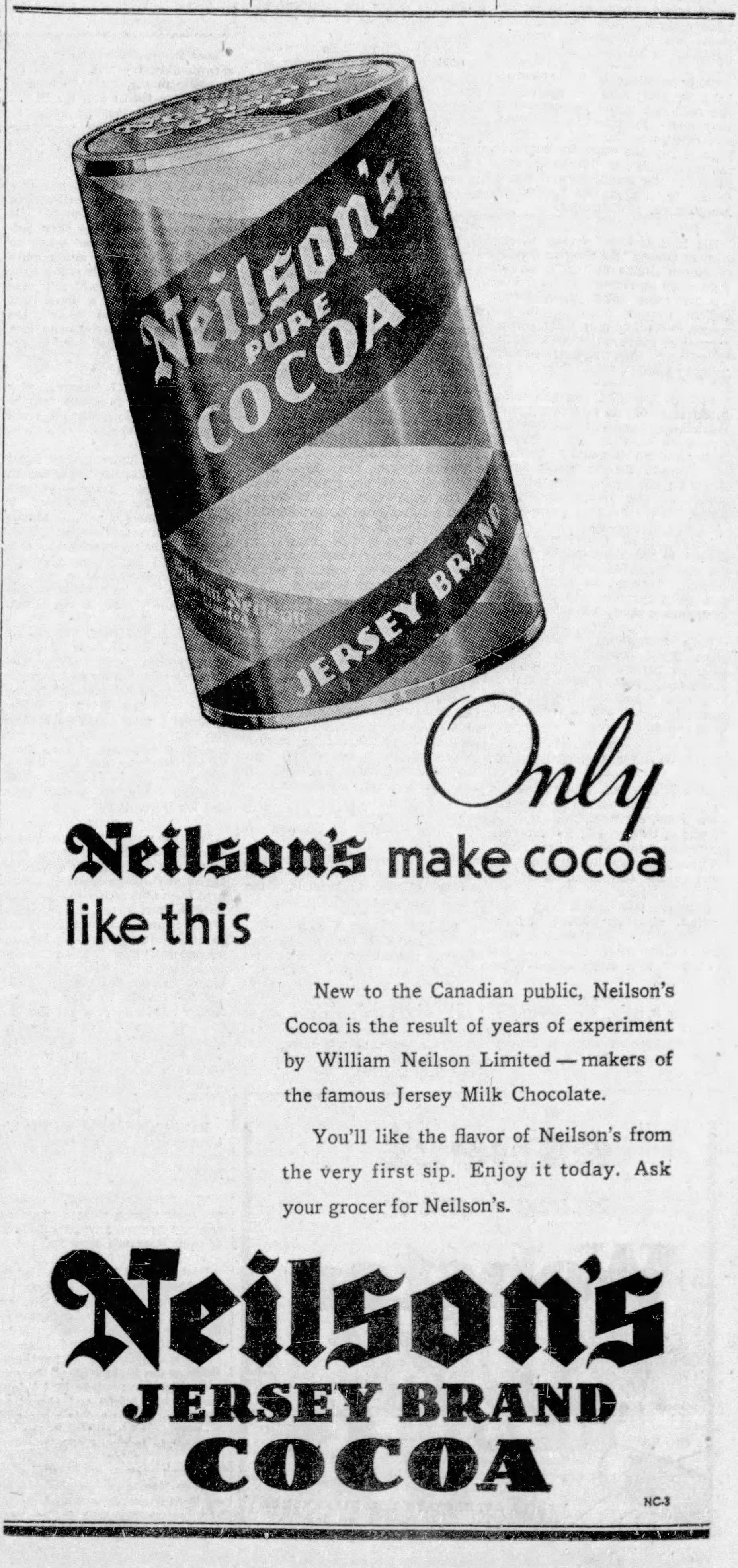
1912 factory safety ad | 1918 ad | 1933 ad
The company employed a whole lot of different people over the years, apparent its help wanted ads.

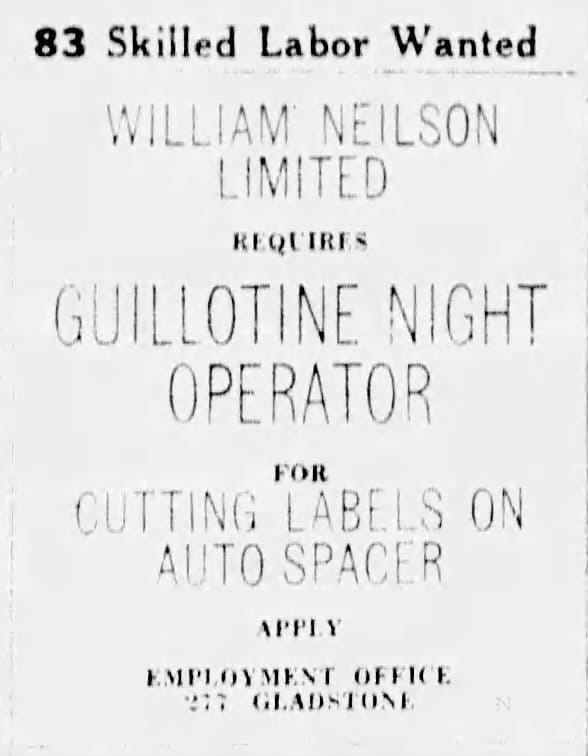

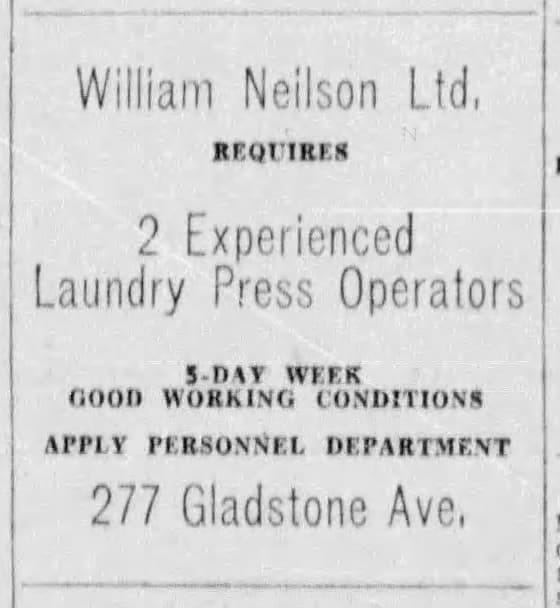
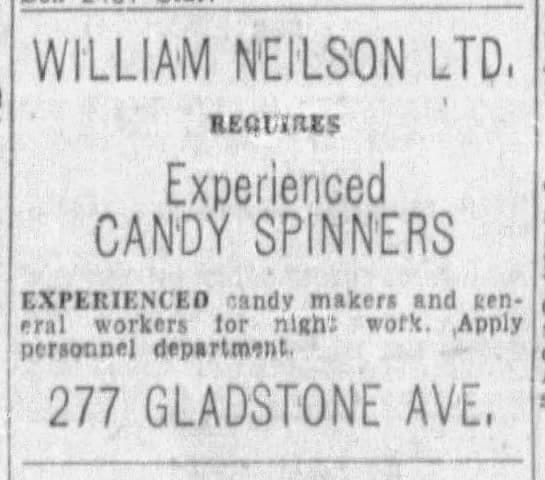
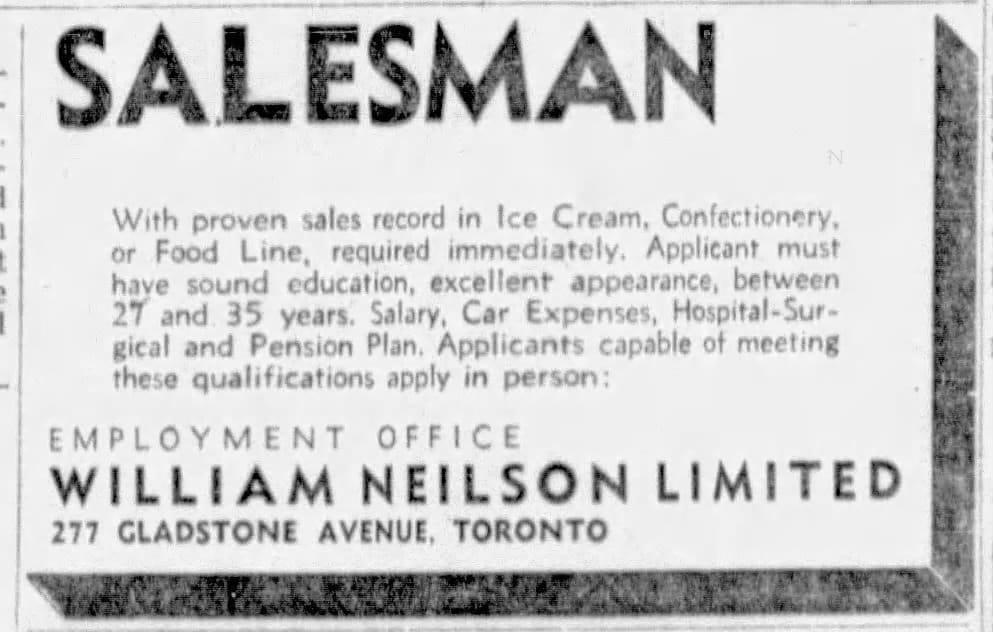
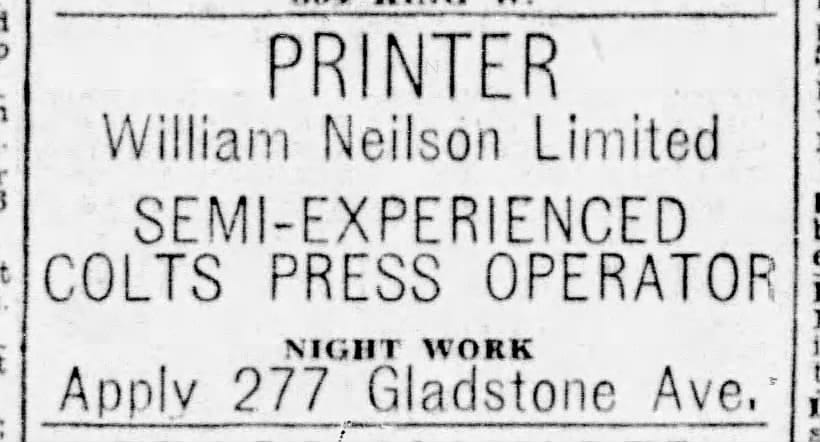

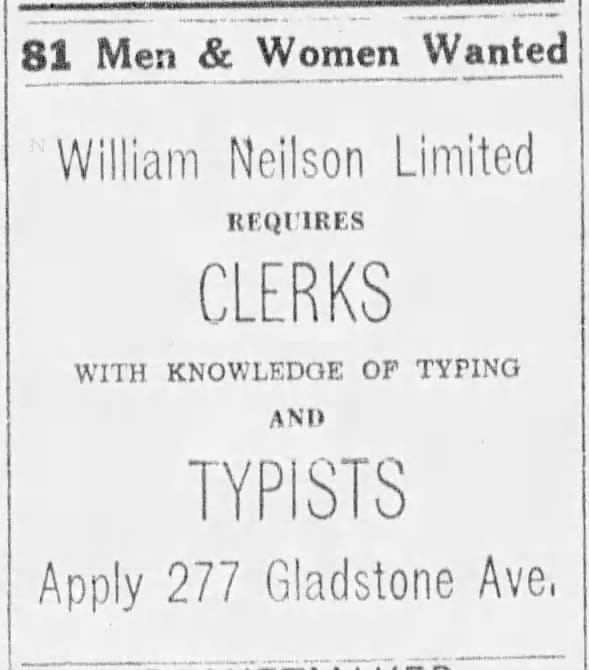
1915 ad for a chocolate dipper | help wanted ads from 1946-1958 for a variety of roles
There were so many building permits here over the last 120 years.
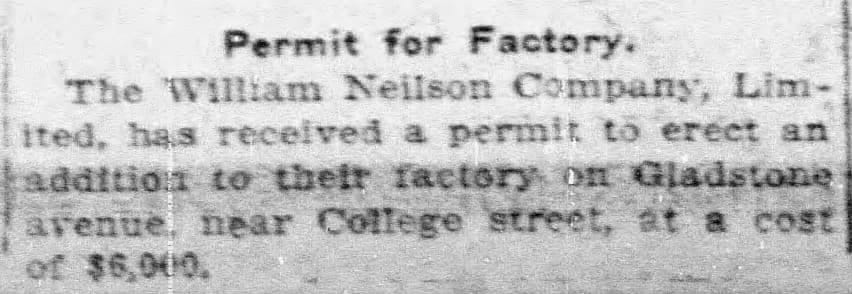
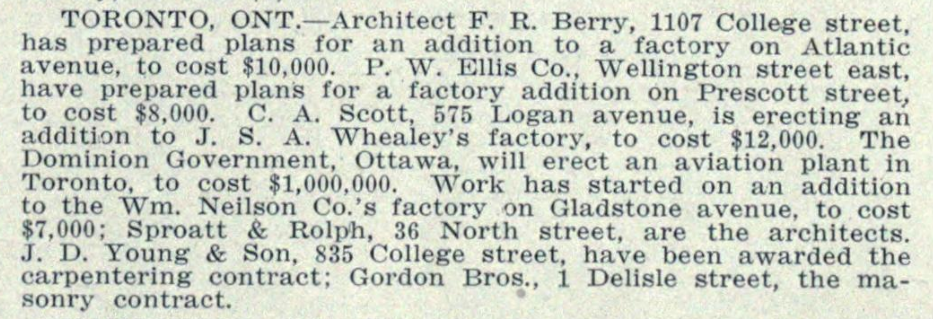
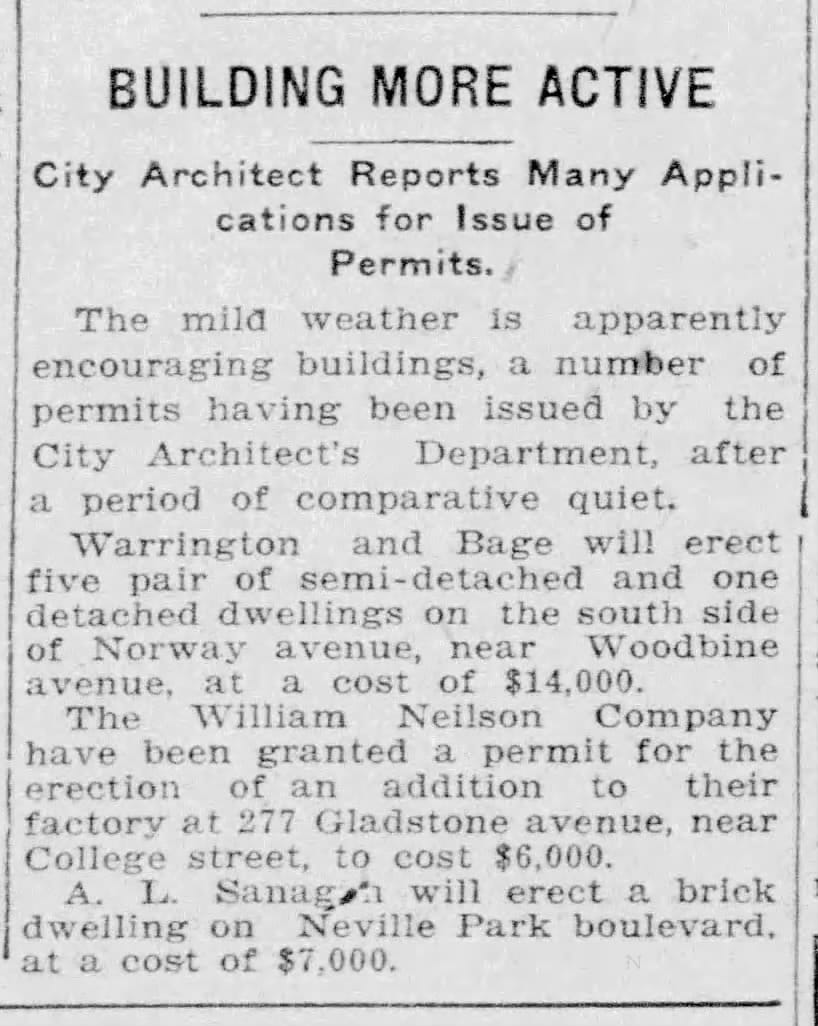
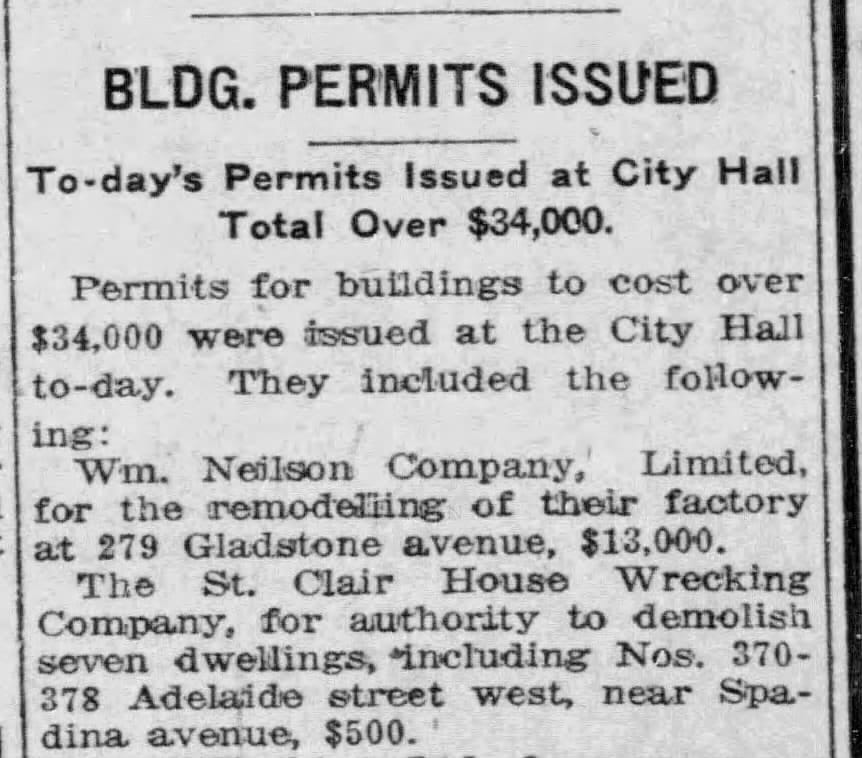
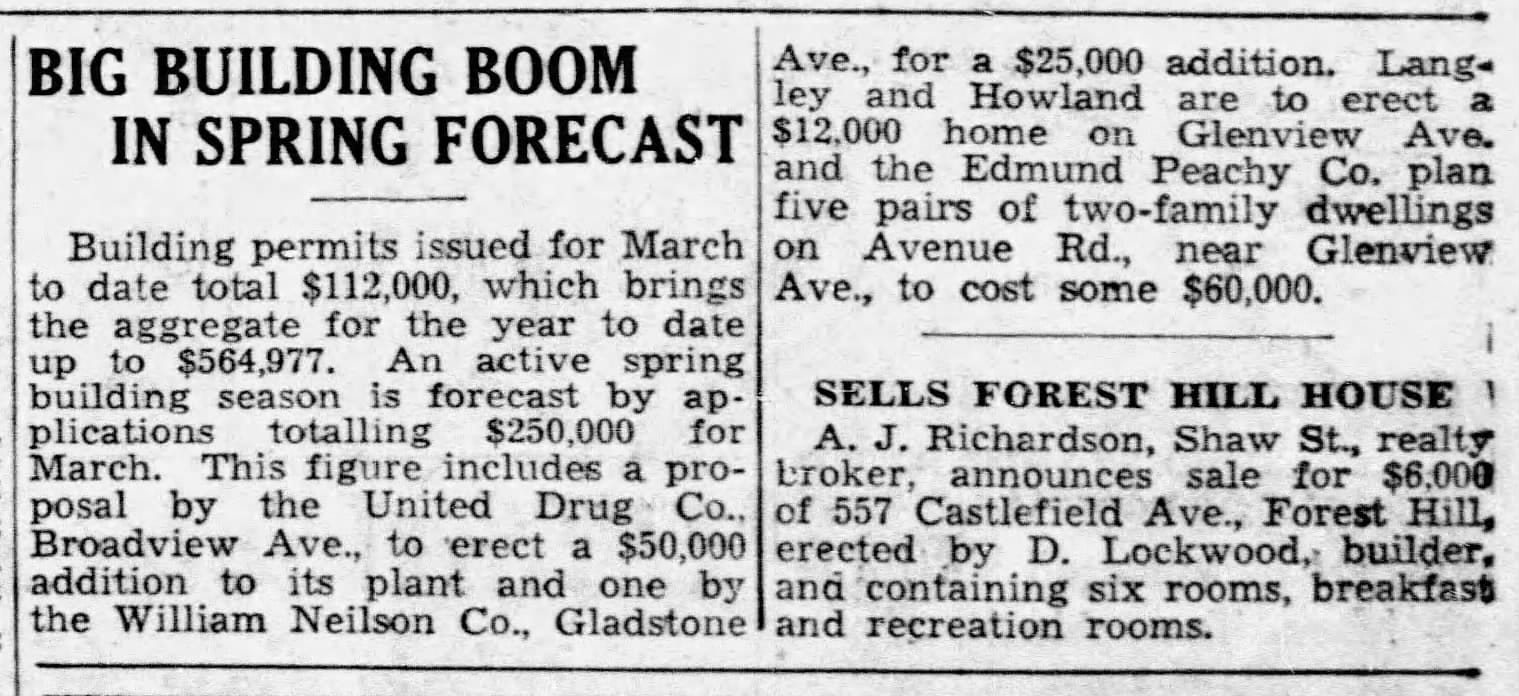
1911 permit | 1916 permit | 1919 permit | 1920 permit | 1936 permit
The fire insurance maps and aerial photos I used to make that video loop.
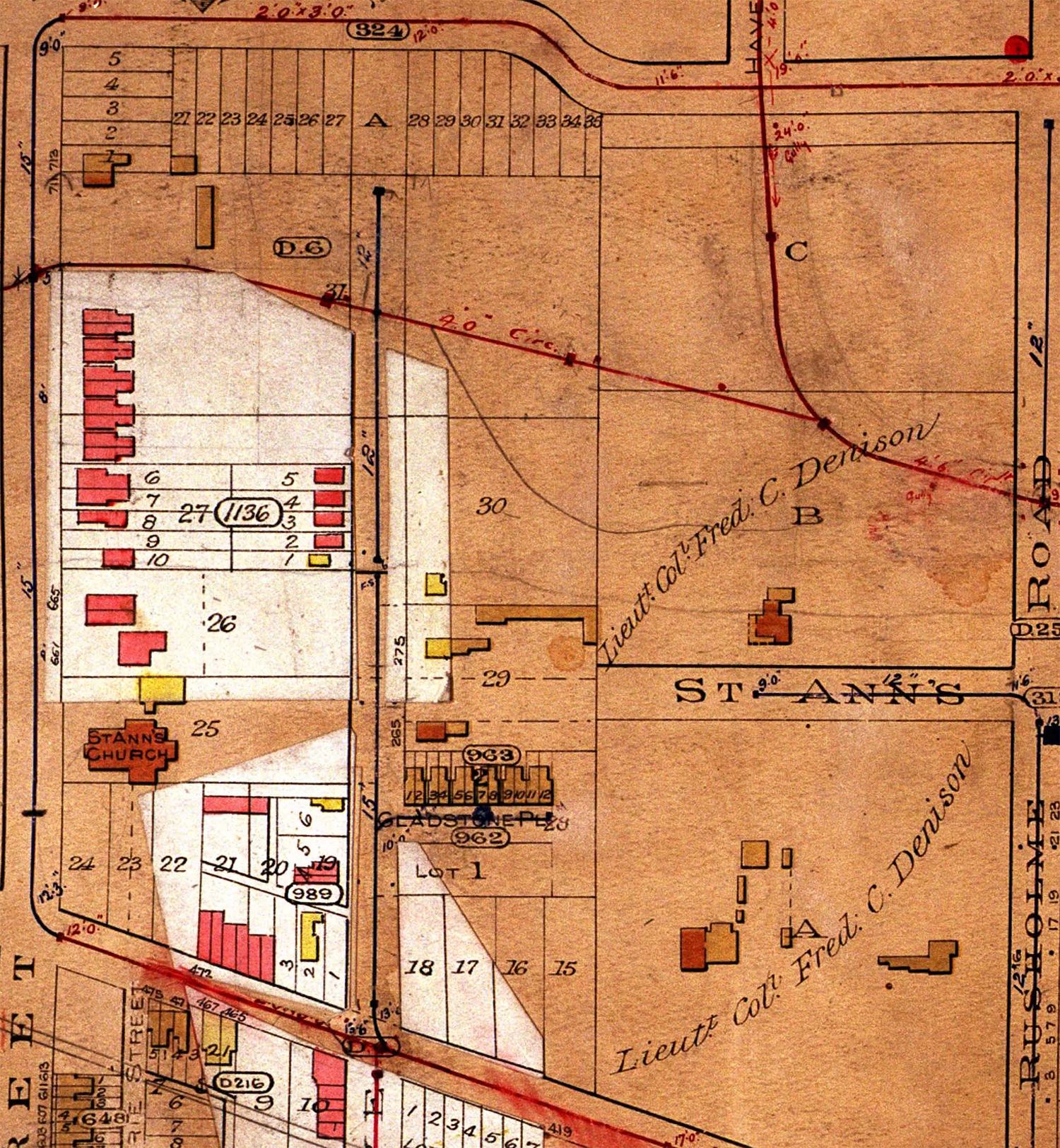
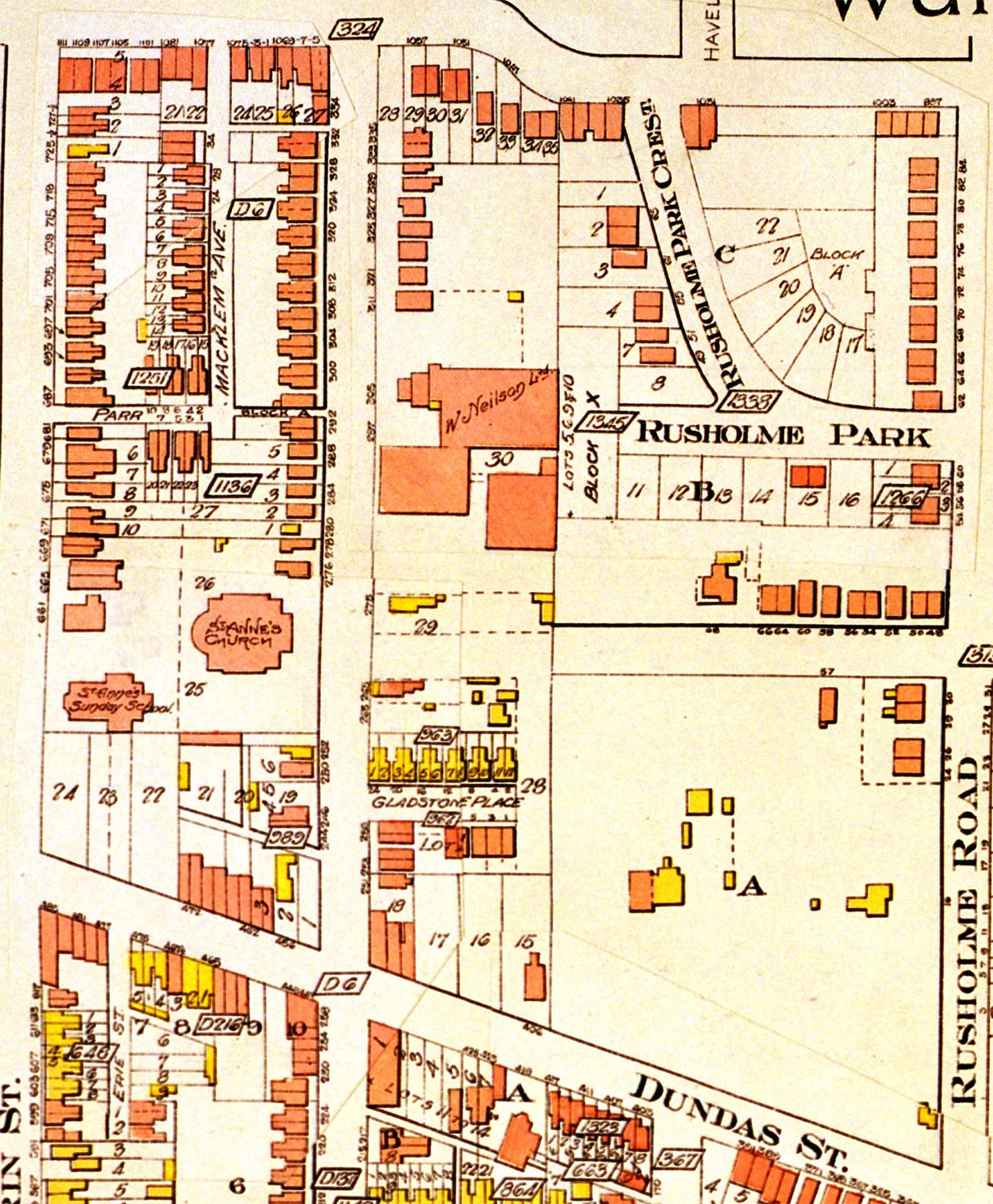
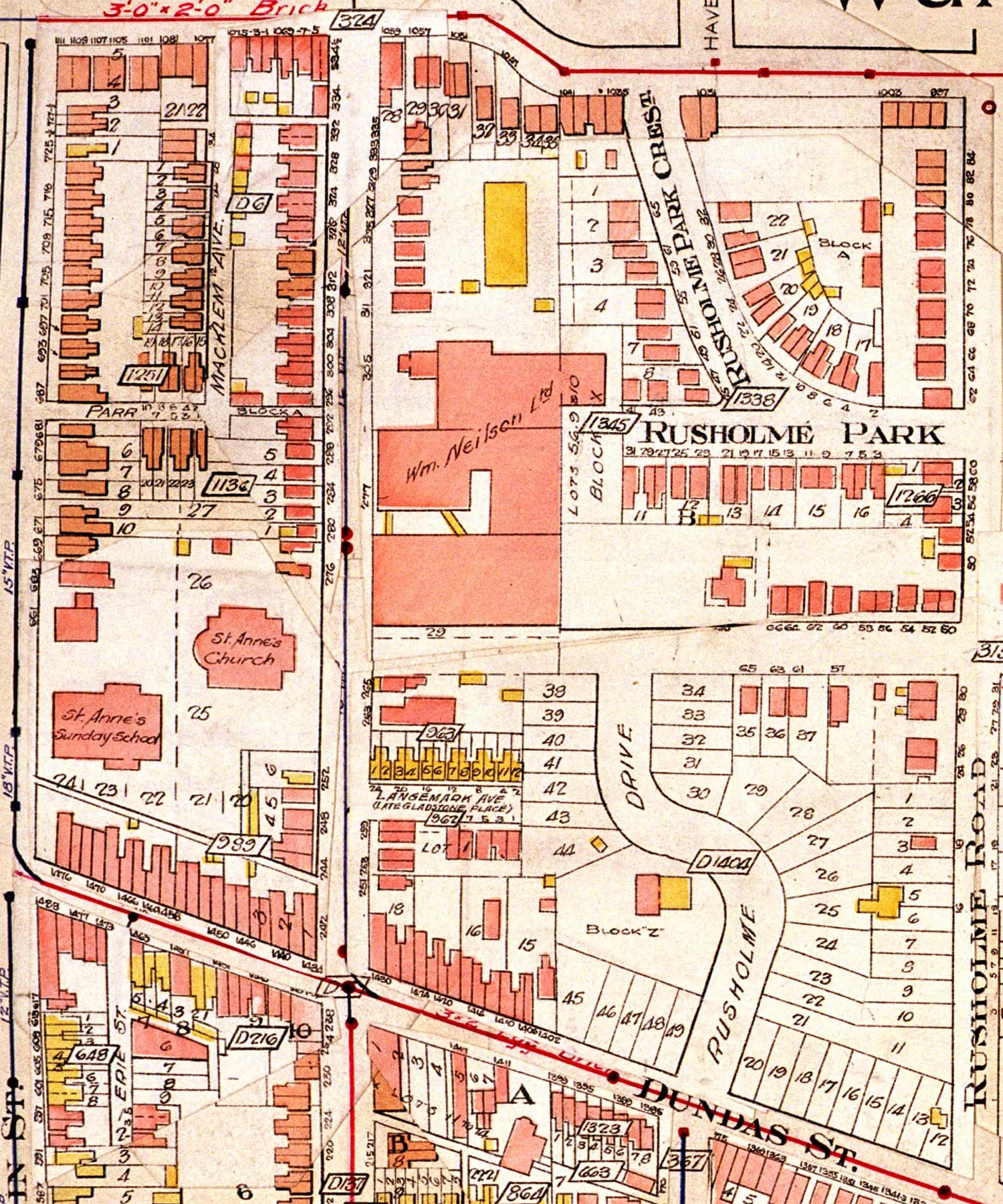
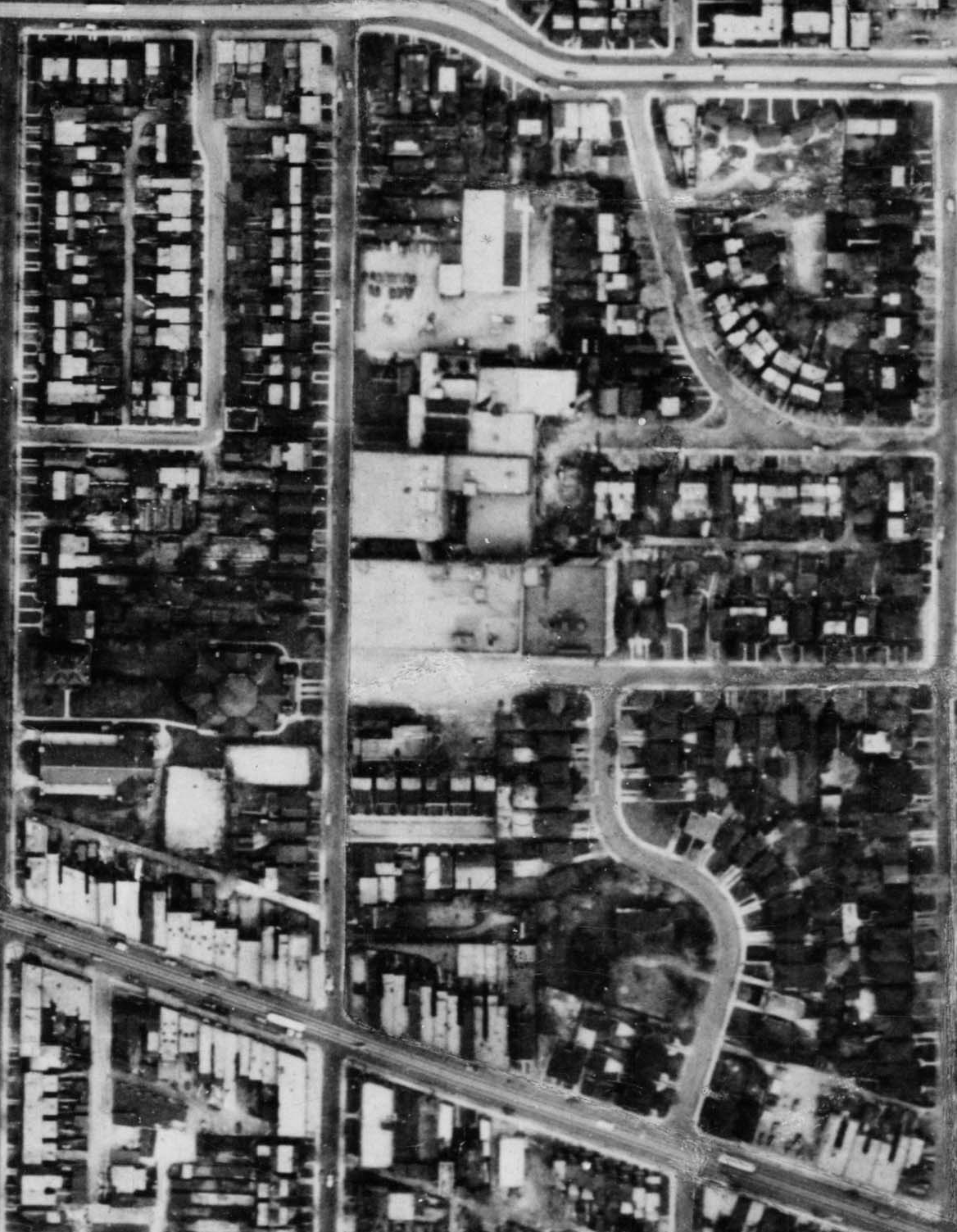
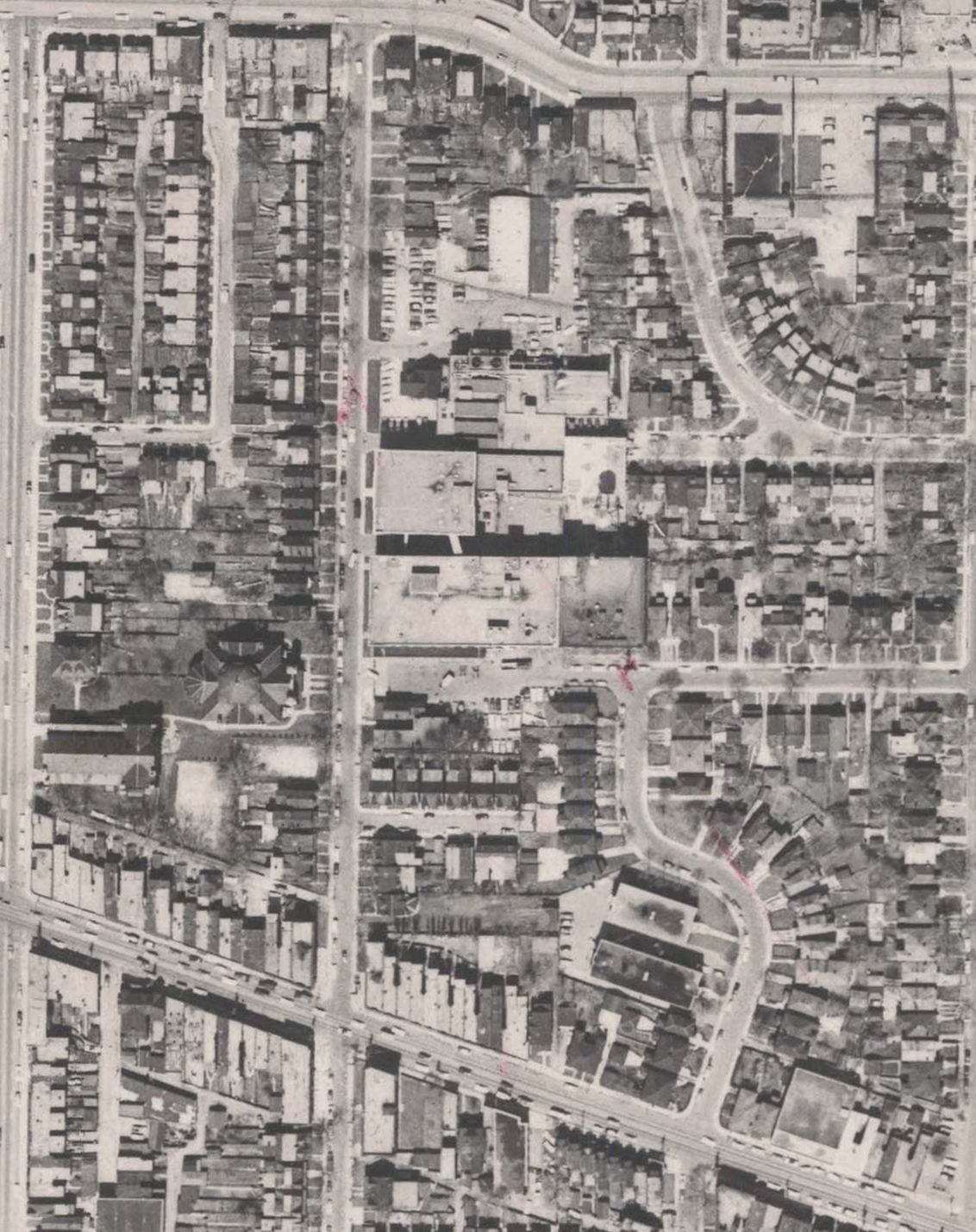
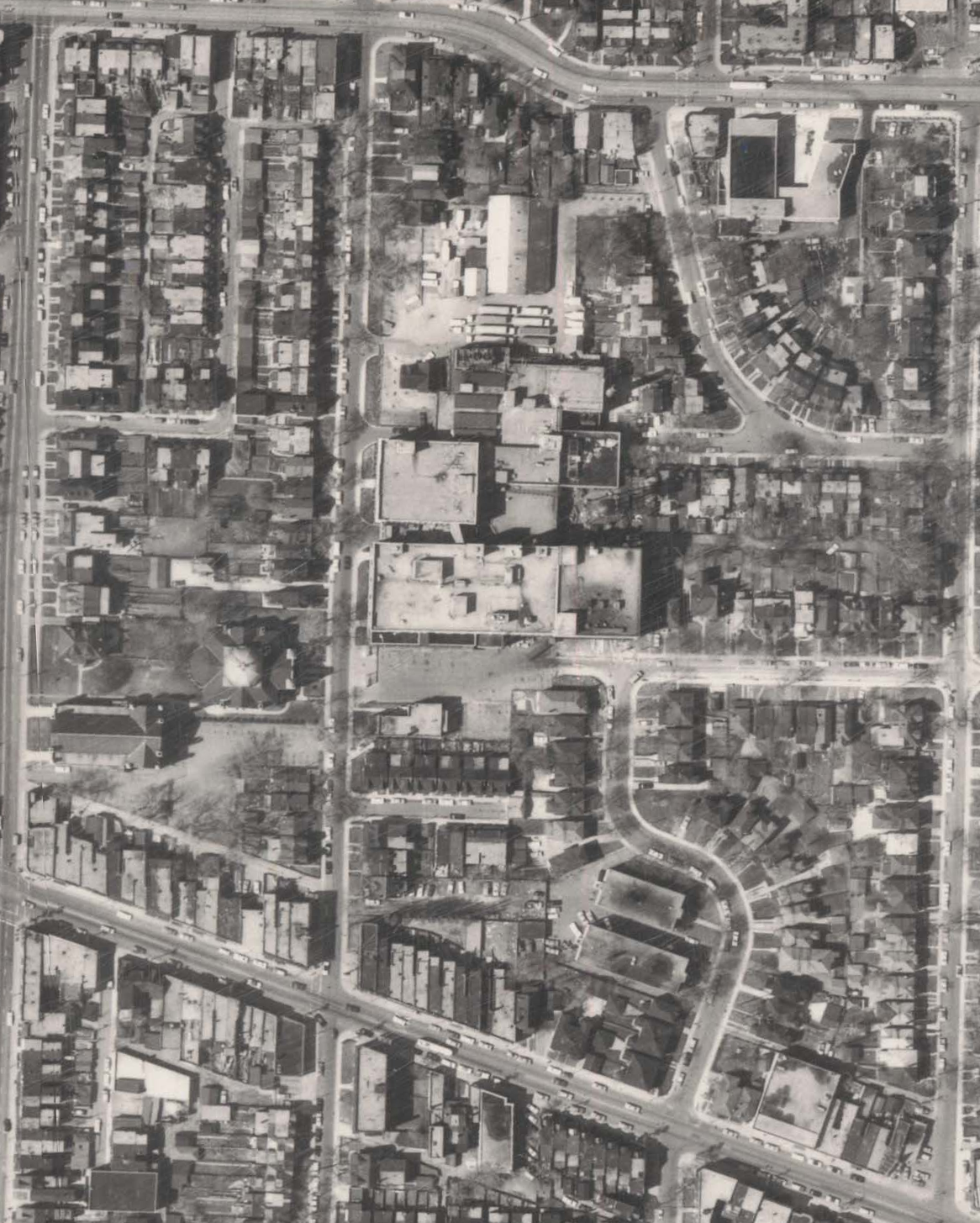
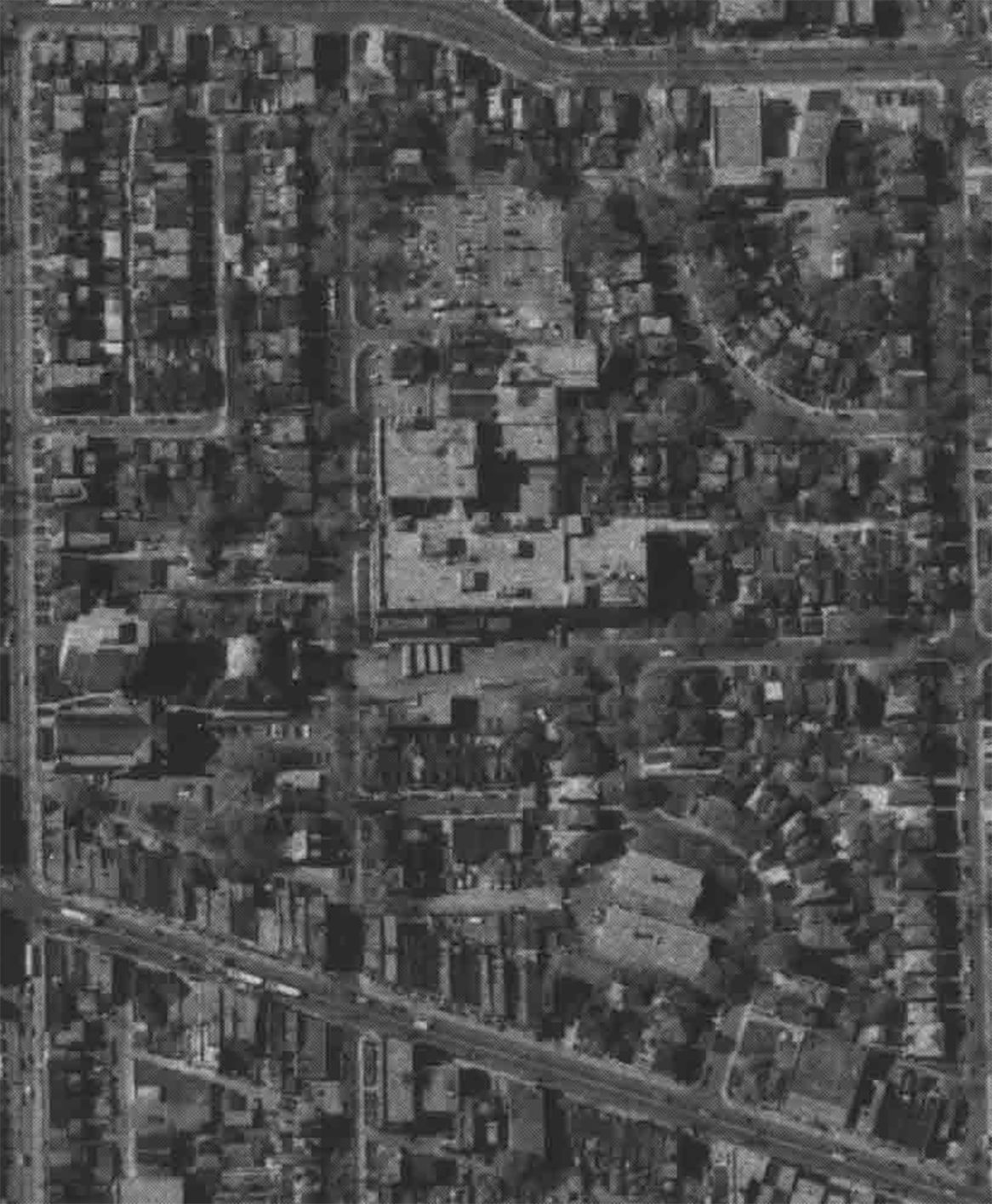
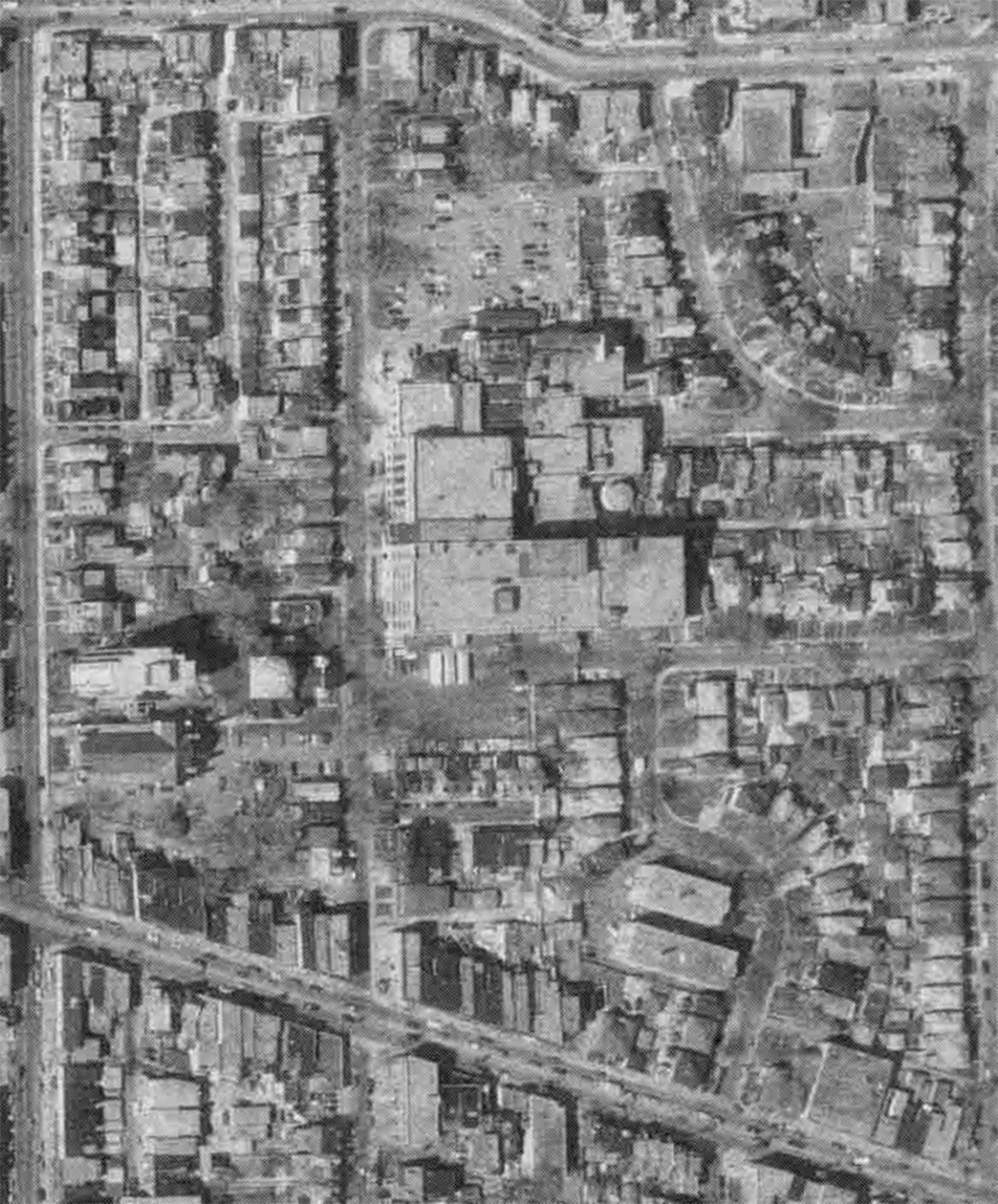
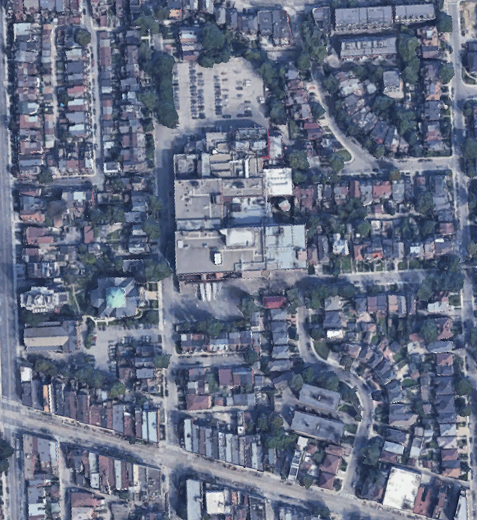
1903 fire insurance map | 1913 fire insurance map | 1924 fire insurance map | 1947 aerial | 1957 aerial | 1967 aerial | 1977 aerial | 1987 aerial | 2024 Google Earth | all aerials, City of Toronto Archives and fire insurance maps, also City of Toronto Archives
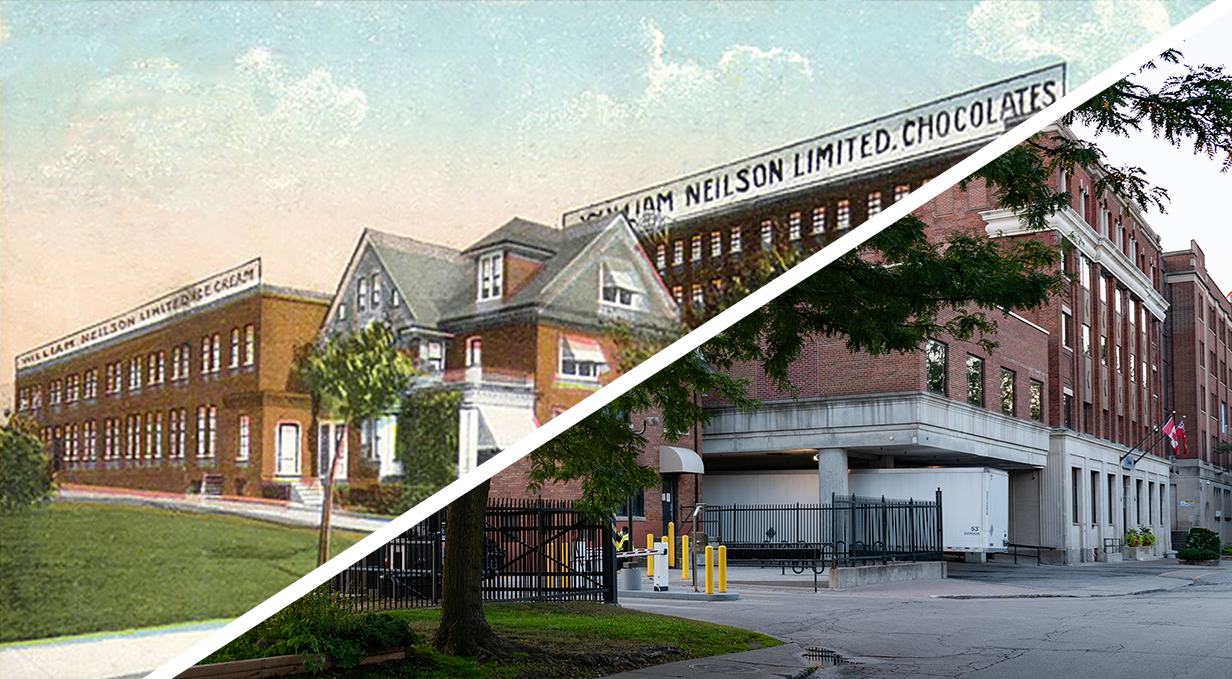




Member discussion: